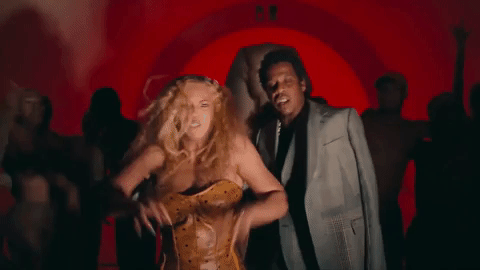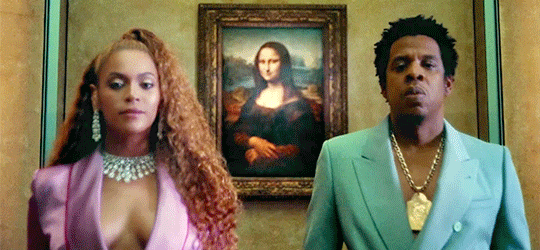
The Carters’ newest music video is a work of art.
R&B/hip-hop power couple Beyonce and Jay-Z dropped their long-awaited album Everything Is Love without warning this past weekend. With it came a ton of art references- the album cover features the Mona Lisa and the music video for its first single APES**T was filmed in the Louvre (watch it here). The track, produced in part by Pharrell Williams, features vocals from Offset and Quavo from Migos so you already know this song is going to be the summer’s hottest track, and the visually-stunning music video might spark as much conversation as Childish Gambino’s This is America.
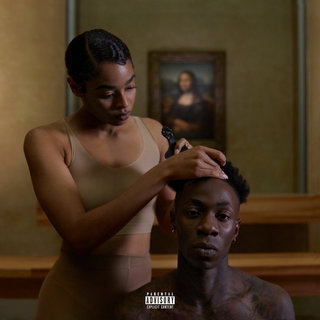
Everything is Love album cover
The music video for APES**T features black bodies in a museum that predominantly showcases white artists and artworks that definitely call back to colonialism. It’s an interesting choice in terms of filming location, and you can argue whether or not it’s “empowering” or “political enough,” but as you figure that out, here’s a comprehensive guide to each of the artworks featured in the video.
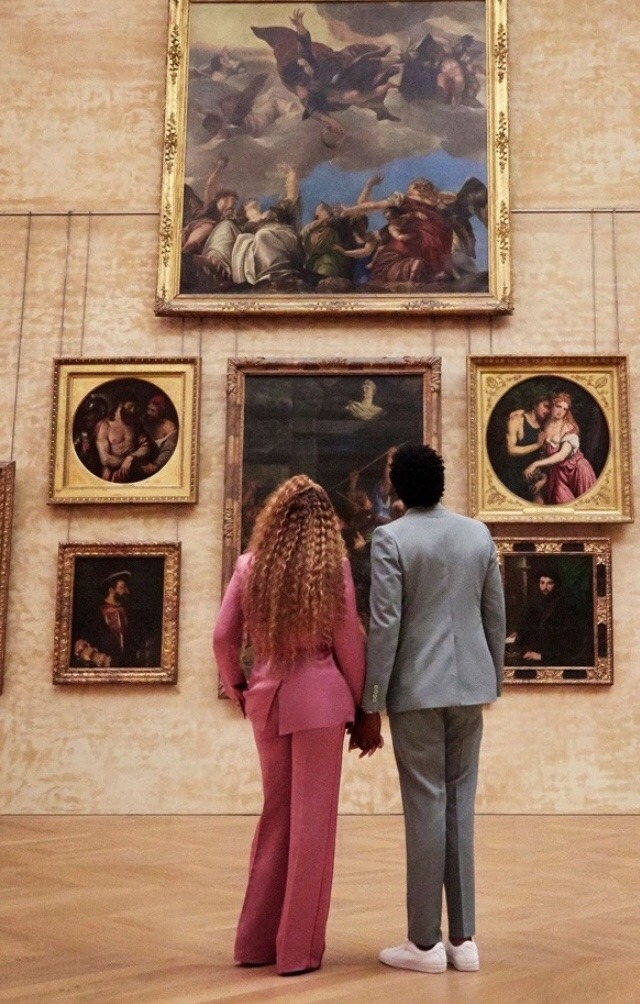
How much do you think it takes to rent out the entire Louvre?
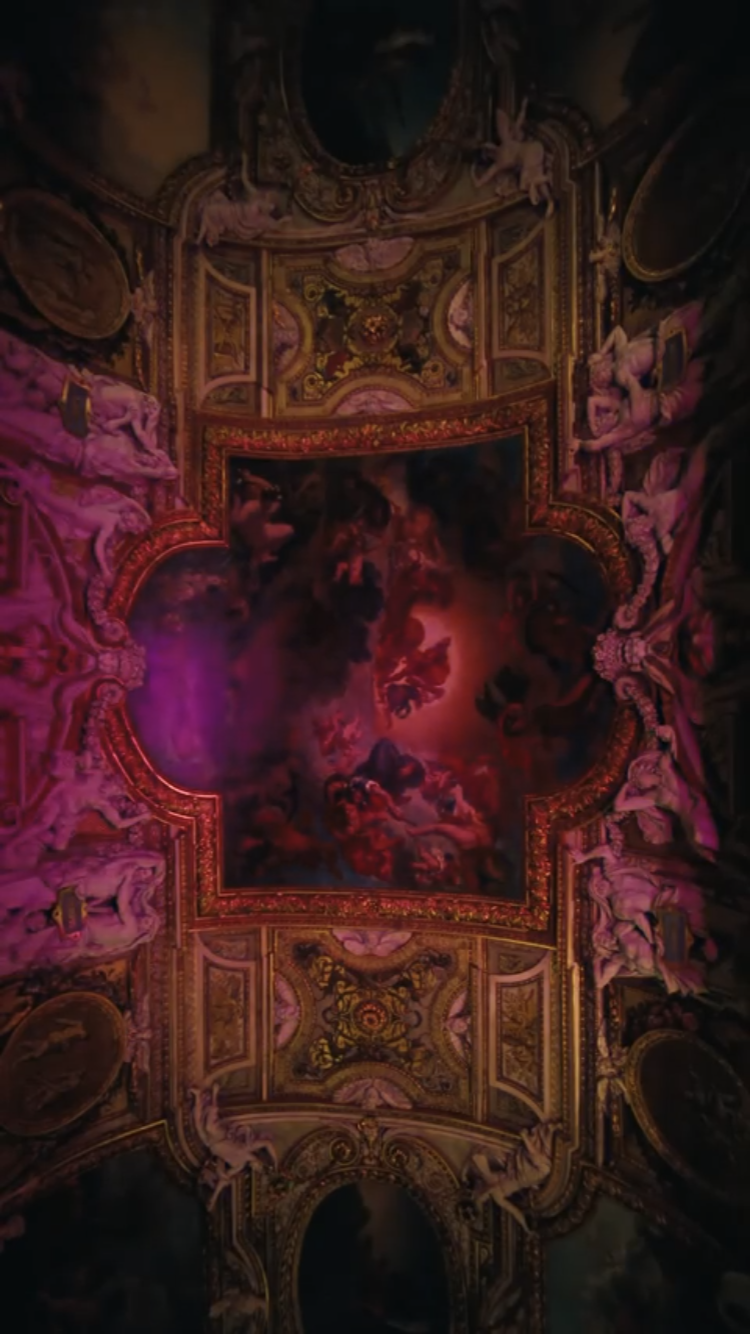
Changing colors light up the ceiling of the Louvre
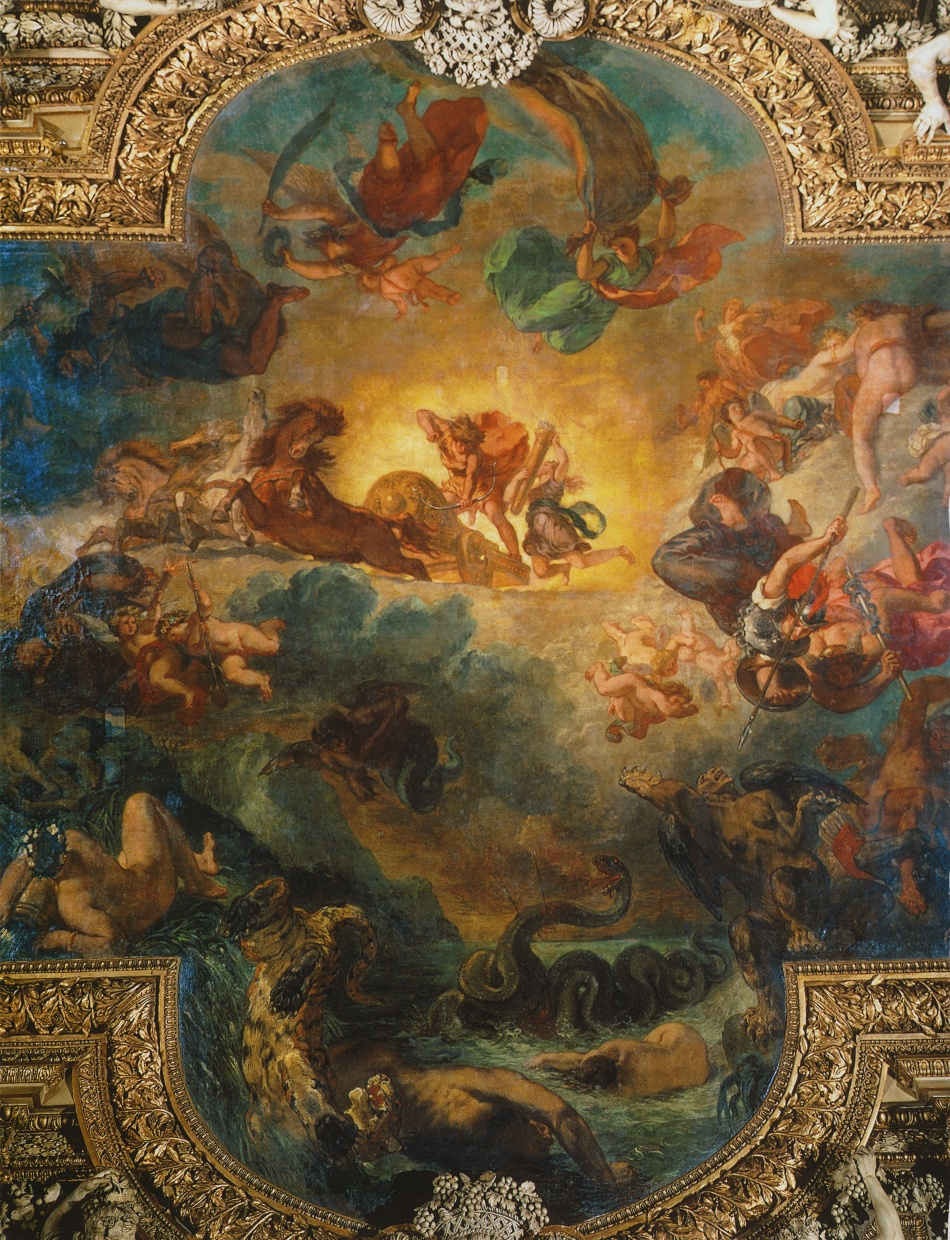
Apollo Slays Python, Eugene Delacroix, 1850
Originally Charles Le Brun was commissioned to paint this ceiling, but the project was handed over to Delacroix who discarded Le Brun’s idea of placing Apollo in a chariot in favor or your typical Good vs Evil painting. The colorful lights shining on the ceiling take away from the austerity of the painting and set the tone for the video- this is going to be more than a showcase of art.
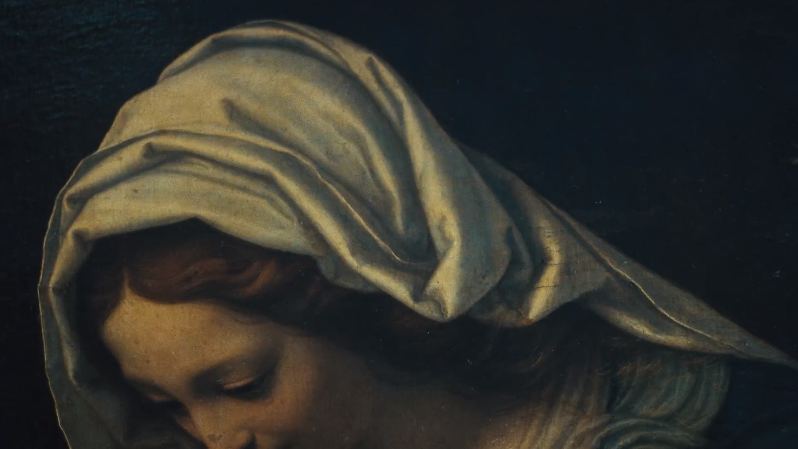
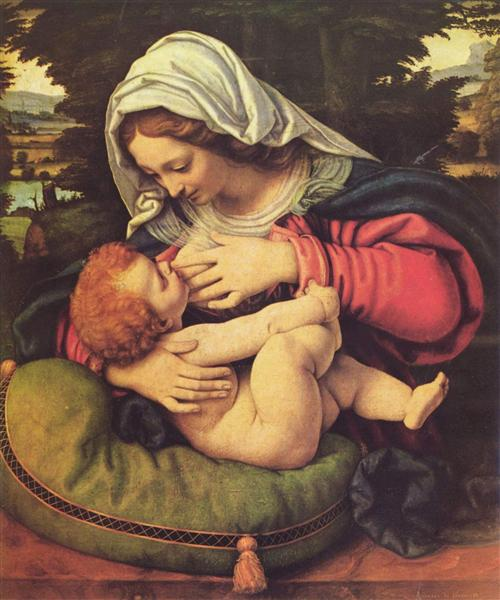
The Virgin of the Green Cushion, Andrea Solario, 1507
So much tenderness and love in one picture! I couldn’t help but notice similarities between this painting and Beyonce’s maternity photoshoot (pictured below) with her twins Rumi and Sir, who just celebrated their first birthday a few days before the video was released.
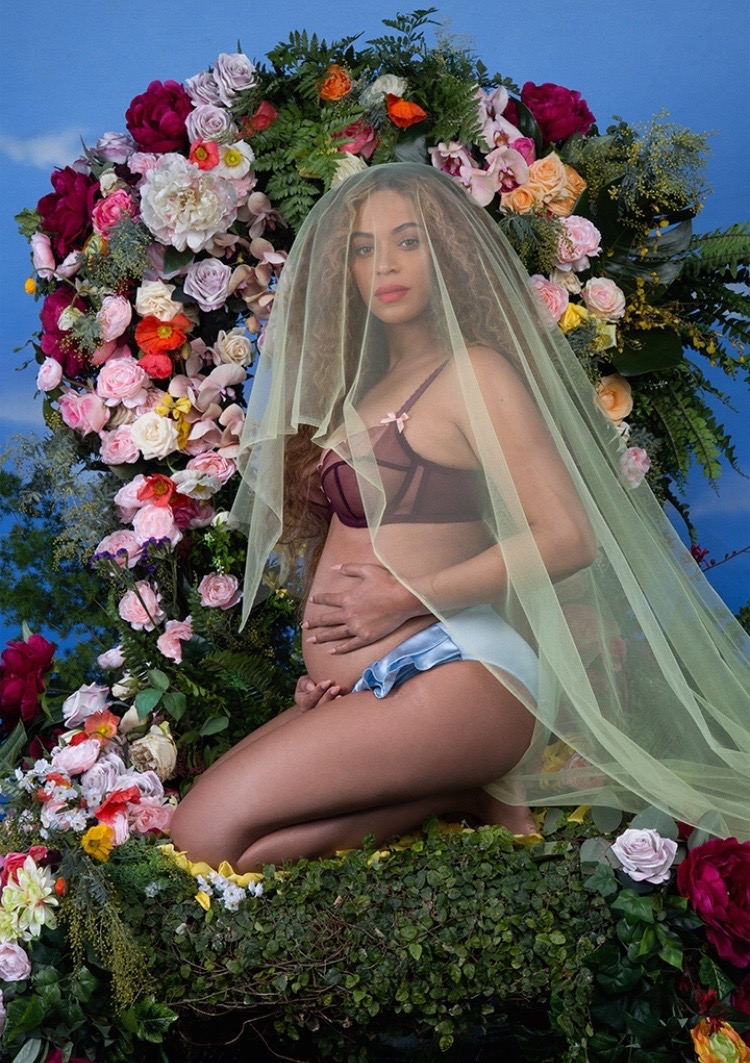
Awol Erizku, 2017
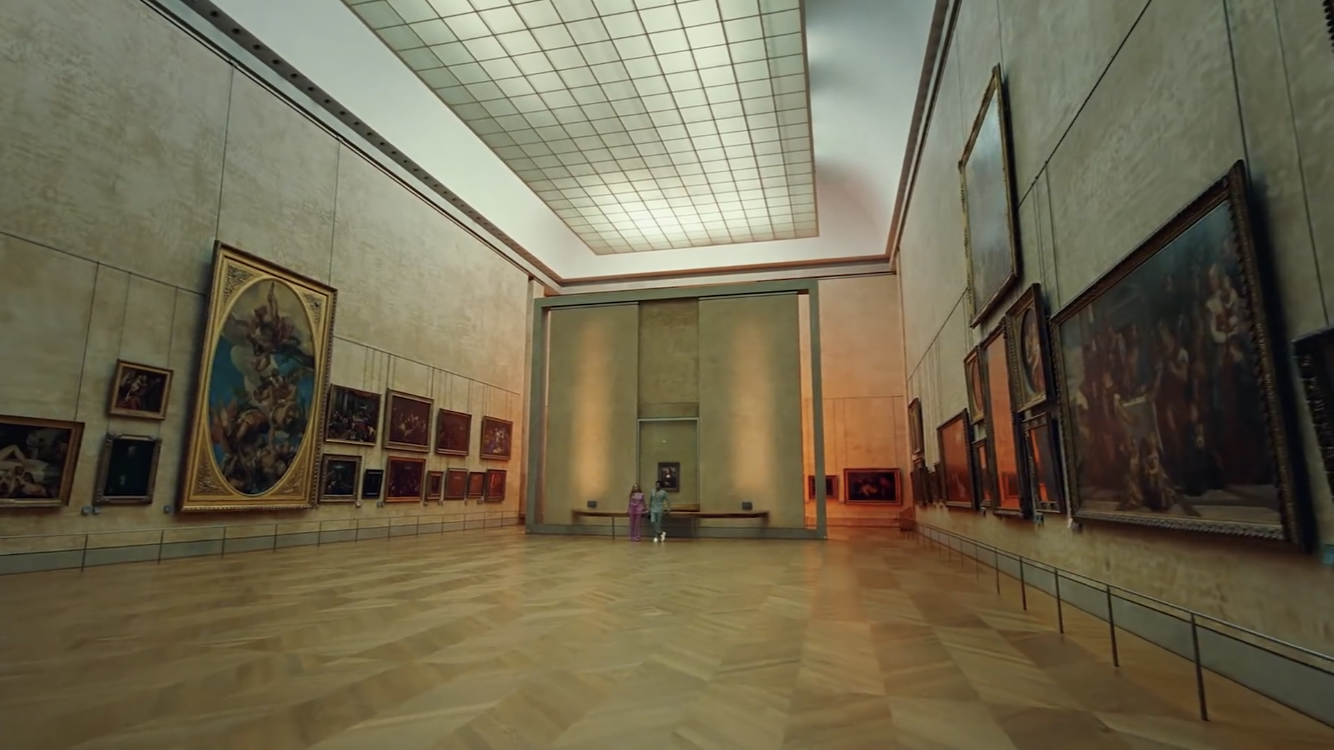
APES**T begins playing once we see Bey and Jay standing in front of the Mona Lisa- you might have heard of it. You can also see paintings by Italian Renaissance painter Paolo Veronese like Supper in Emmaus (right) and Jupiter Hurling Thunderbolts at The Vices (left). We’ll see more of Veronese’s work later in the video.
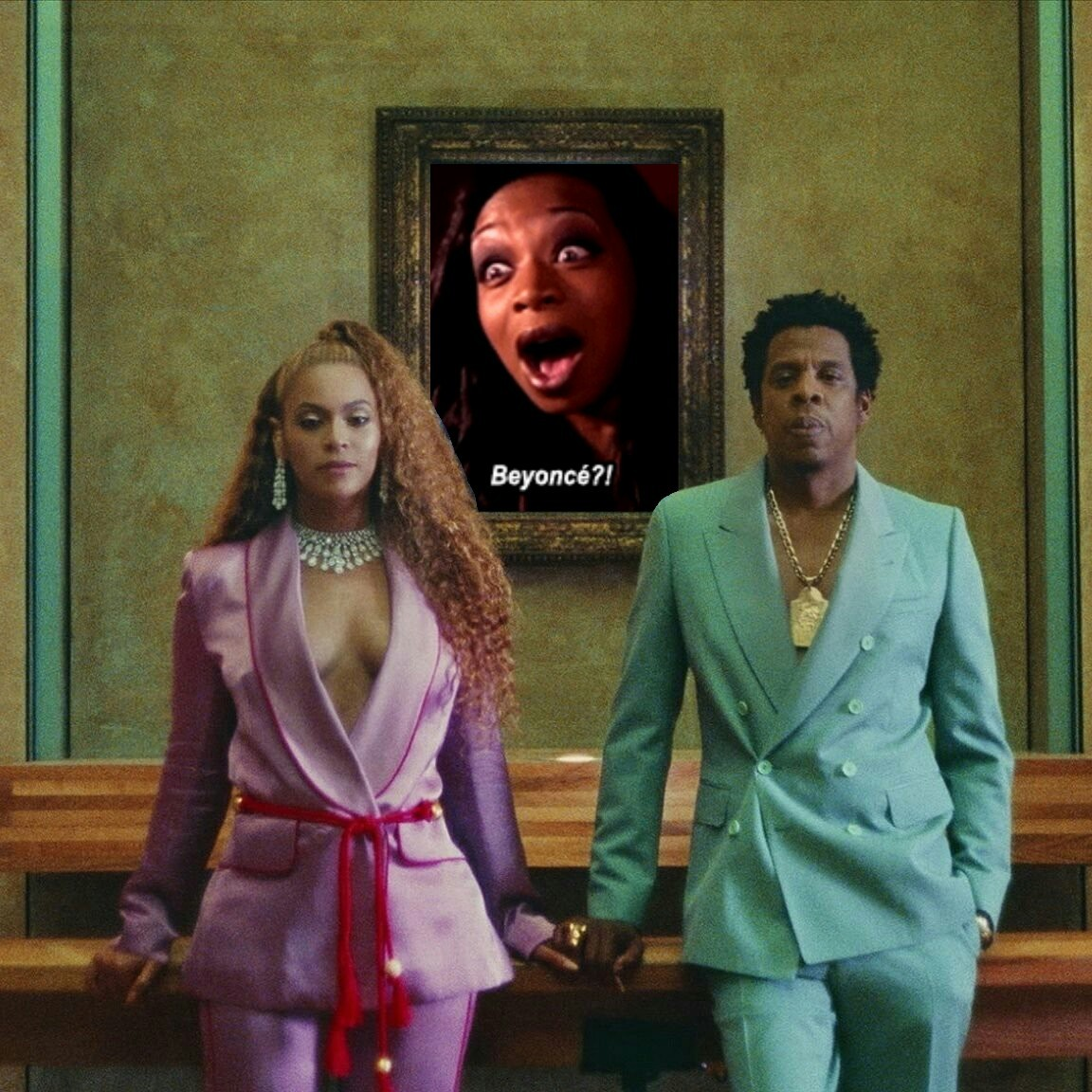
Actual footage of the Mona Lisa’s reaction to Beyoncé
...just kidding!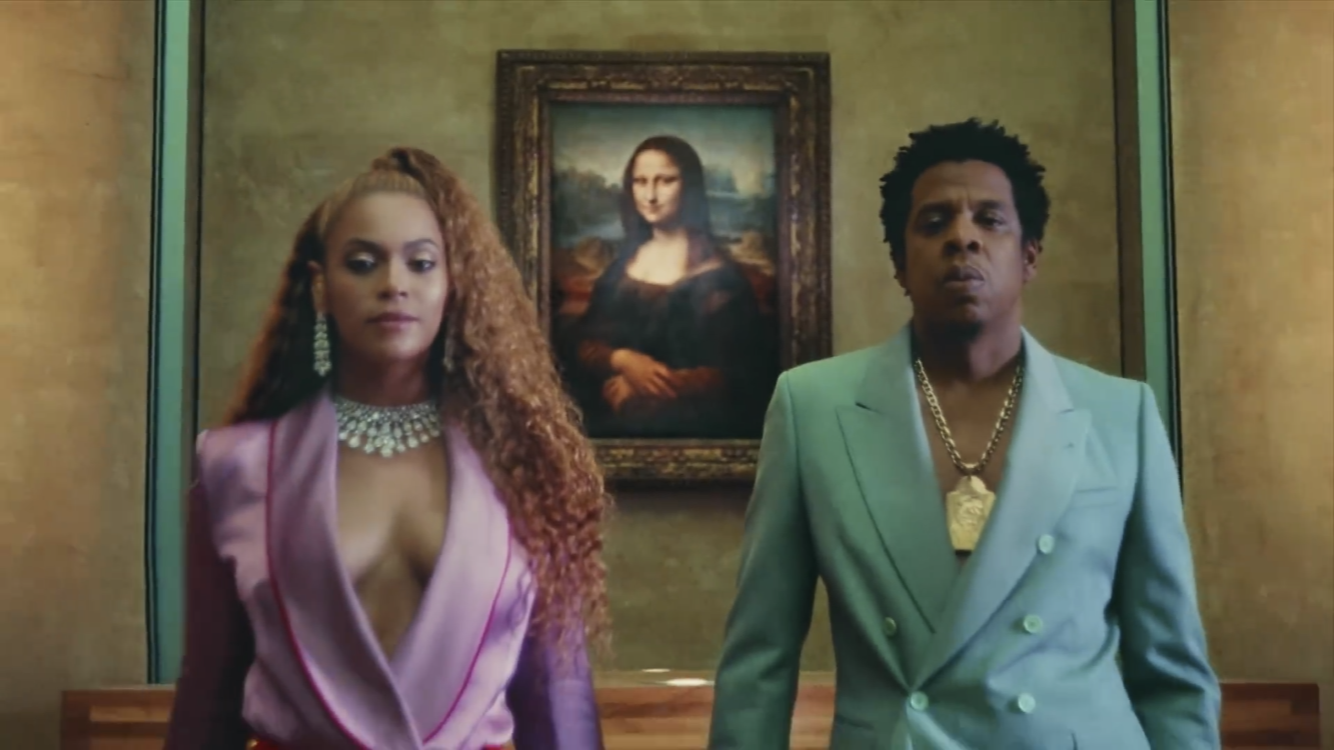
Damn. Talk about a power couple.
Leonardo da Vinci’s portrait of the Mona Lisa is one of the most, if not the most, visited paintings in the world. It’s considered the most recognizable painting of all time and also has an incredible estimated value at over $600 billion. Similarly, Beyoncé and Jay-Z are two of the highest-selling hip-hop artists of all time. Bey and Jay’s power stance in front of the famed painting suggests that perhaps they are both the “Mona Lisa” of their respective genres.
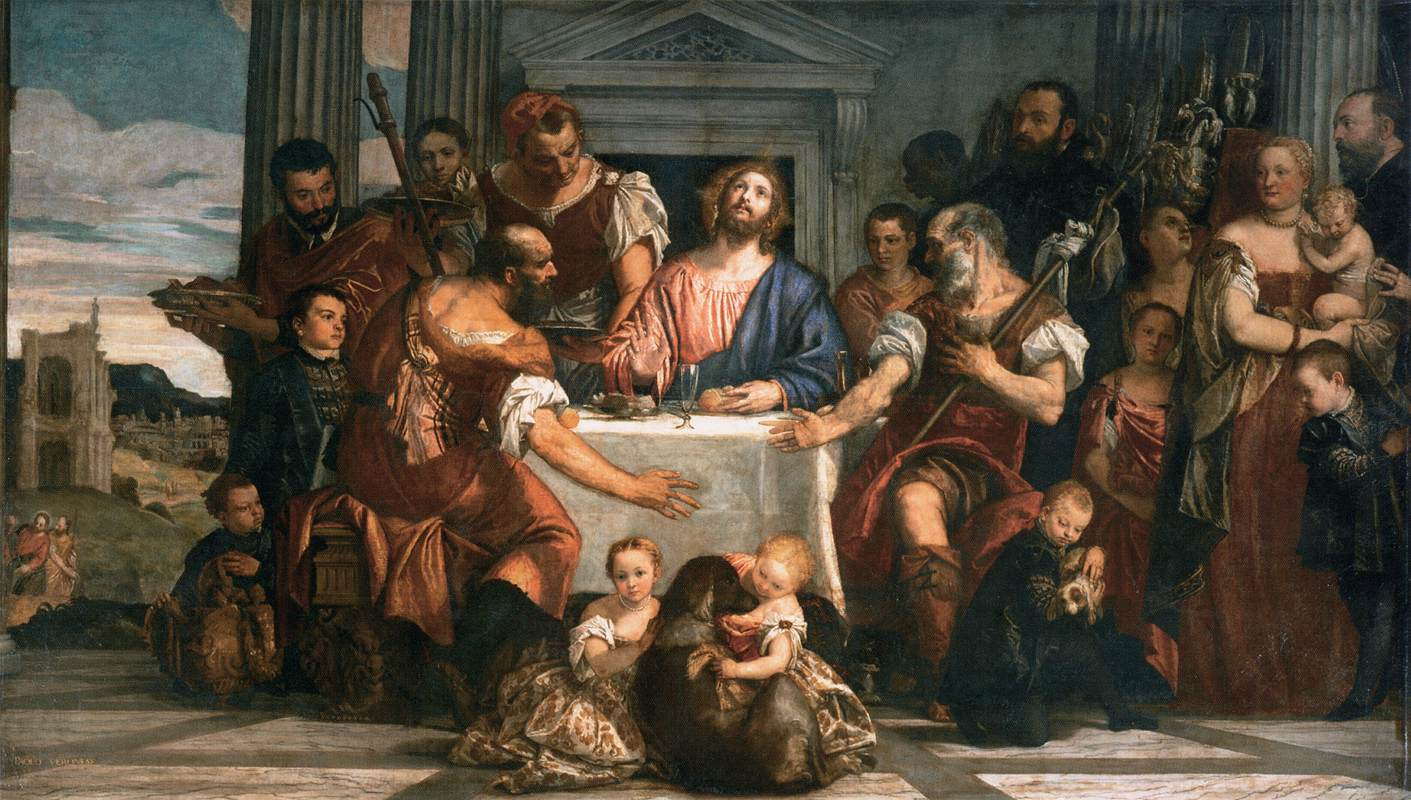
Supper in Emmaus, Paolo Veronese, 1560
This biblical scene where a resurrected Jesus reveals himself to his disciples by blessing bread is no stranger to the art world. It’s been depicted by major artists like Caravaggio and Rembrandt. Veronese’s version strayed from the traditional style, however; instead of placing the scene in an inn as was commonly done, he placed it in a castle and even dressed the characters in upper-class clothing. Veronese’s preference of glamour seems pretty in character with APES**T’s lyrics regarding the Carters’ lavish lifestyles.
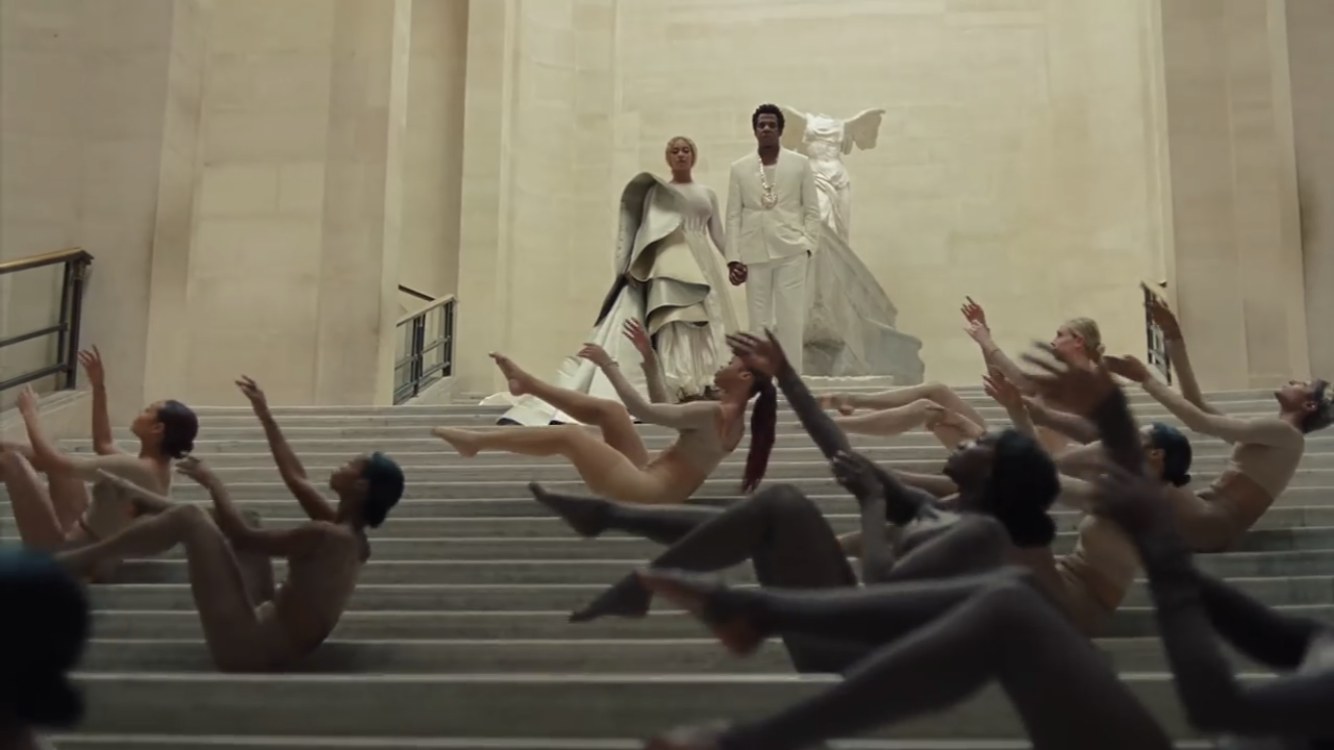
Here we see Bey and Jay in front of the Winged Victory of Samothrace. The symbolism here is a little obvious. Both are rapping verses in front of this sculpture, implying that they both embody the figure of Victory themselves. The extravagant folds in Bey’s outfit even mimics Victory’s wings.
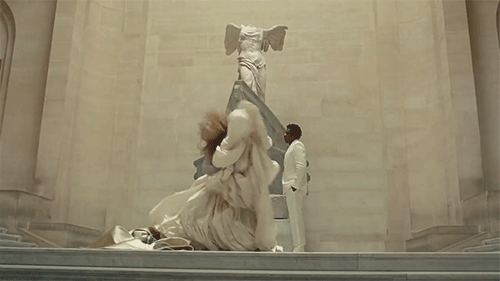
If Beyoncé had the ability to fly, I wouldn’t even be surprised
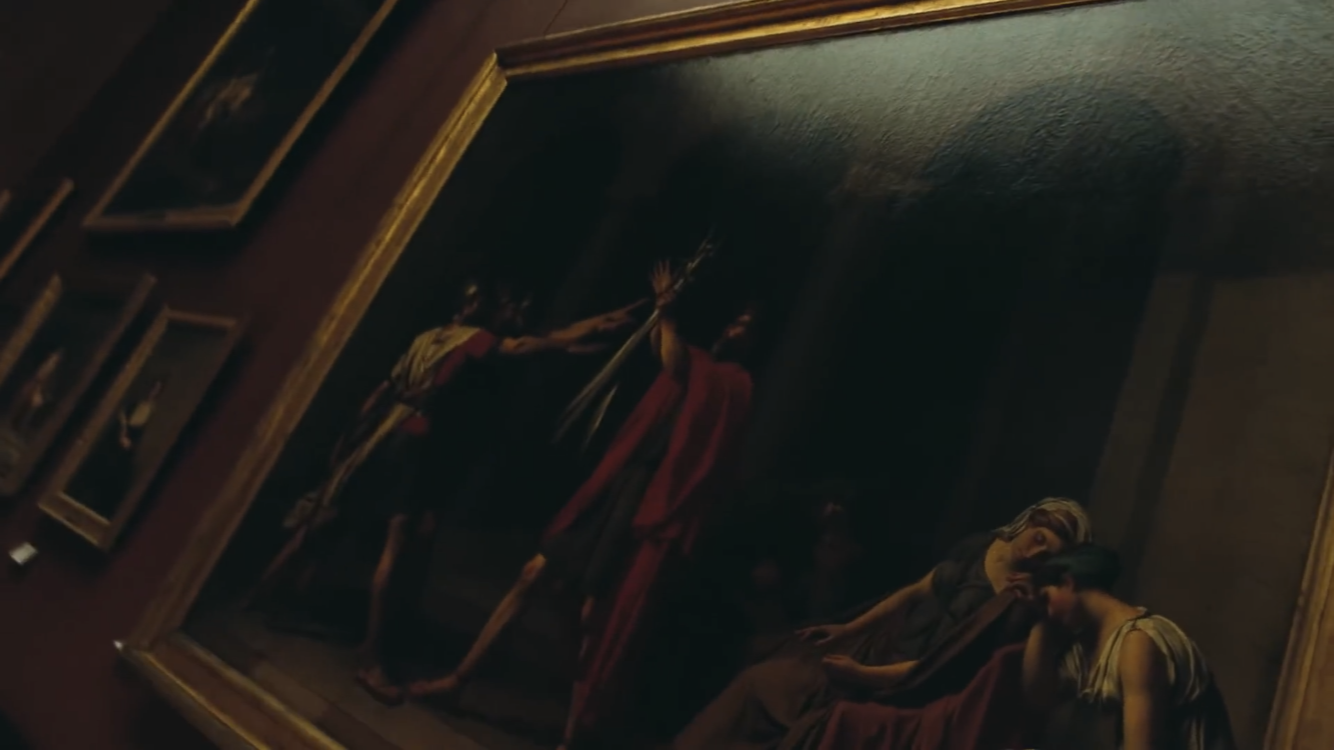
We then see a fleeting glimpse of this painting which turns out to be….
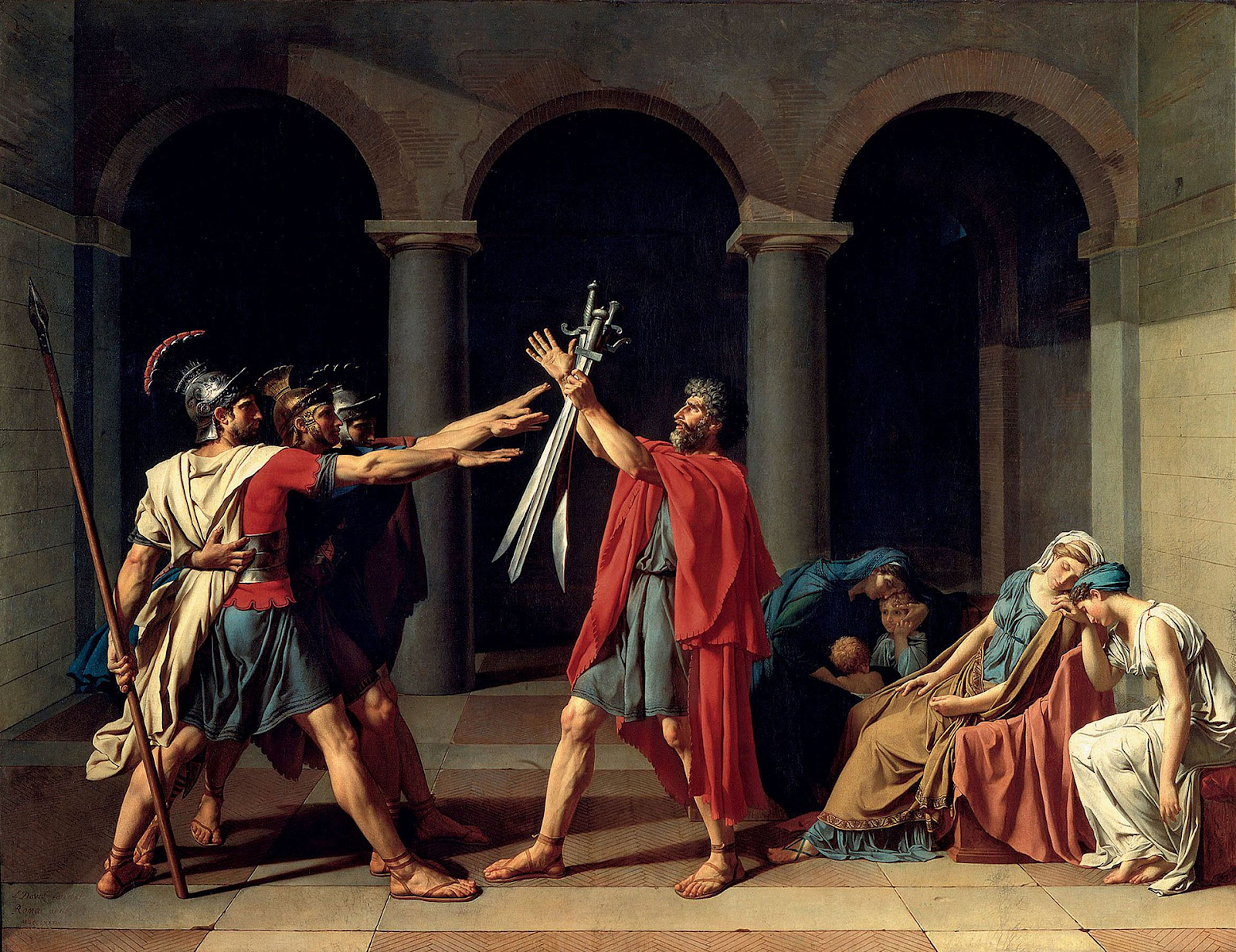
Oath of the Horatii, Jacques-Louis David, 1784
One of David’s better-known works, this painting became one of the defining images of patriotism during the French Revolution. It depicts the Horatius brothers pledging their unfaltering loyalty to Rome. Its appearance in the video perhaps signifies The Carters’ loyalty to the black lives matter movement, as well as their loyalty to each other.
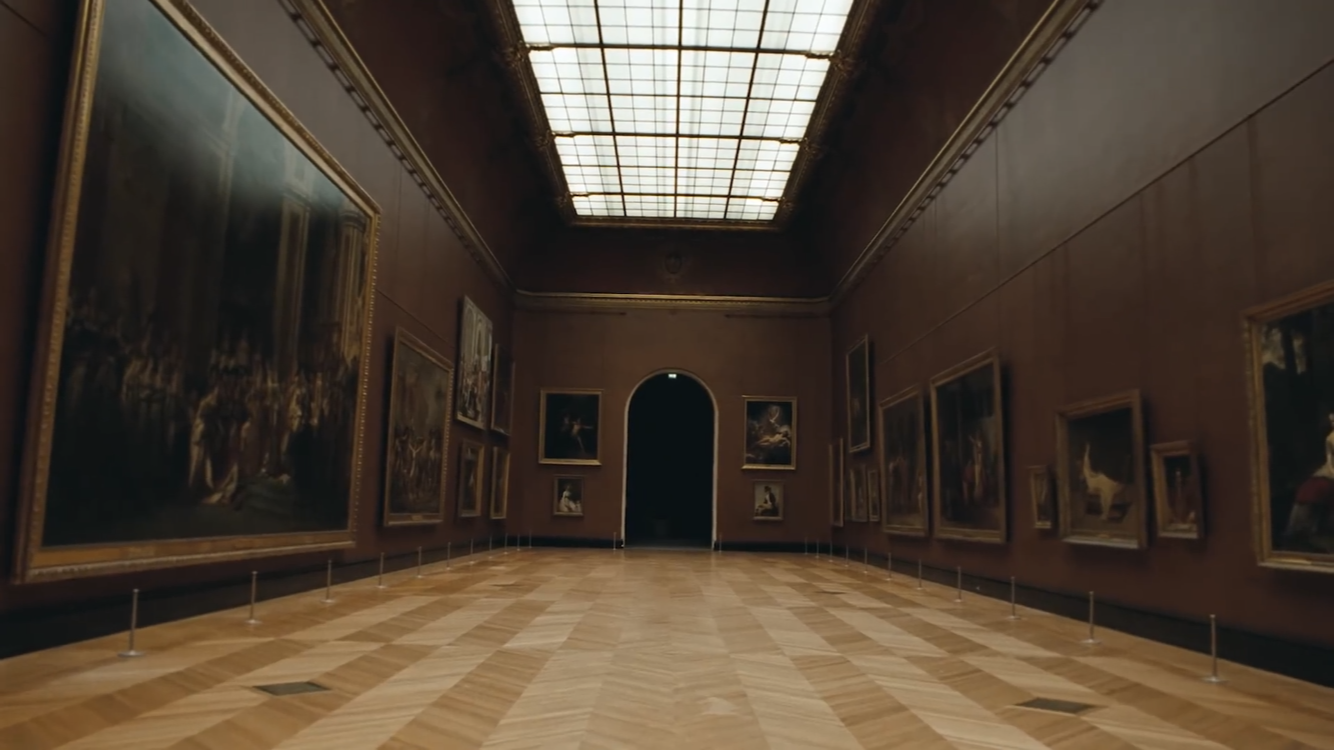
Another gallery shot featuring more works from French artist Jacques-Louis David. I guess Beyoncé and Jay-Z really like his style- five of his paintings are featured in this video!
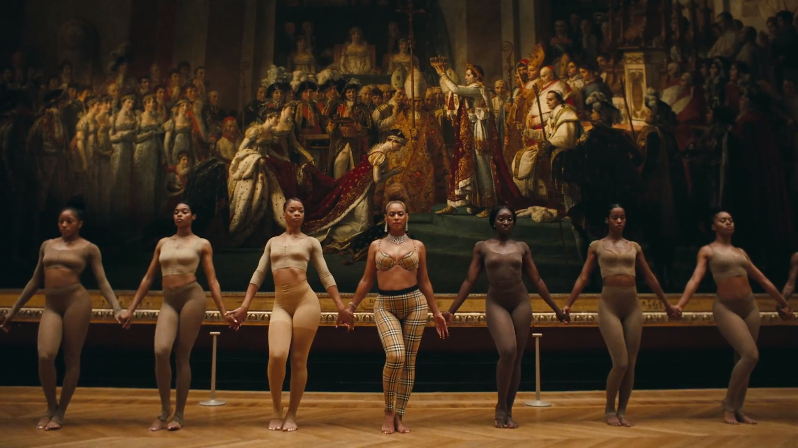
In this gallery we see Beyoncé and her dancers bust moves in front of David’s Coronation of Napoleon.
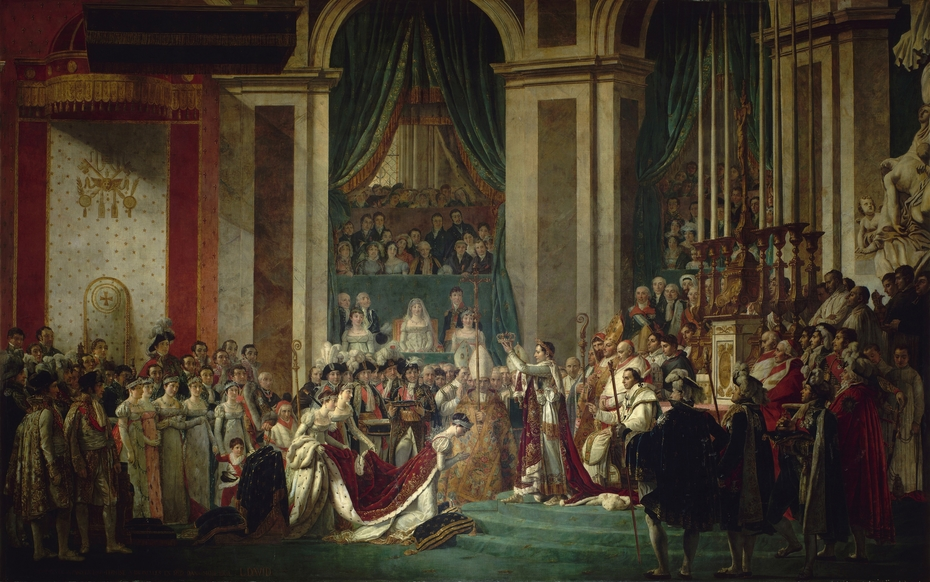
The Coronation of Napoleon, Jacques-Louis David, 1807
This painting was commissioned by Napoleon himself. It depicts the coronation of him and his wife as Emperor and Empress of France. Empress Josephine was a slave owner and allegedly played a promising role in convincing Napoleon to reinstitute slavery in the French colonies. If she knew black women were dancing to black music in front of her coronation portrait, she’d be spinning in her grave! Probably what Beyoncé was going for. There’s also an ironic likeness between Josephine and Beyonce. Both are dressed in extravagant fashion - Beyonce raps a line or two about her “expensive fabrics”- and both are married to royalty (hip hop royalty is still royalty, okay?). Plus, Josephine caught Napoleon in bed with another woman, but the two reconciled with a little help from their daughter. Sound familiar?
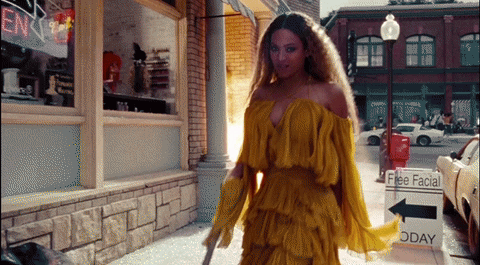
Better call Elisabeth-Antoinette with the good hair
Speaking of empowering women and intimidating men, we also see several close-up details of Intervention of the Sabine Women by- you guessed it- Jacques-Louis David.

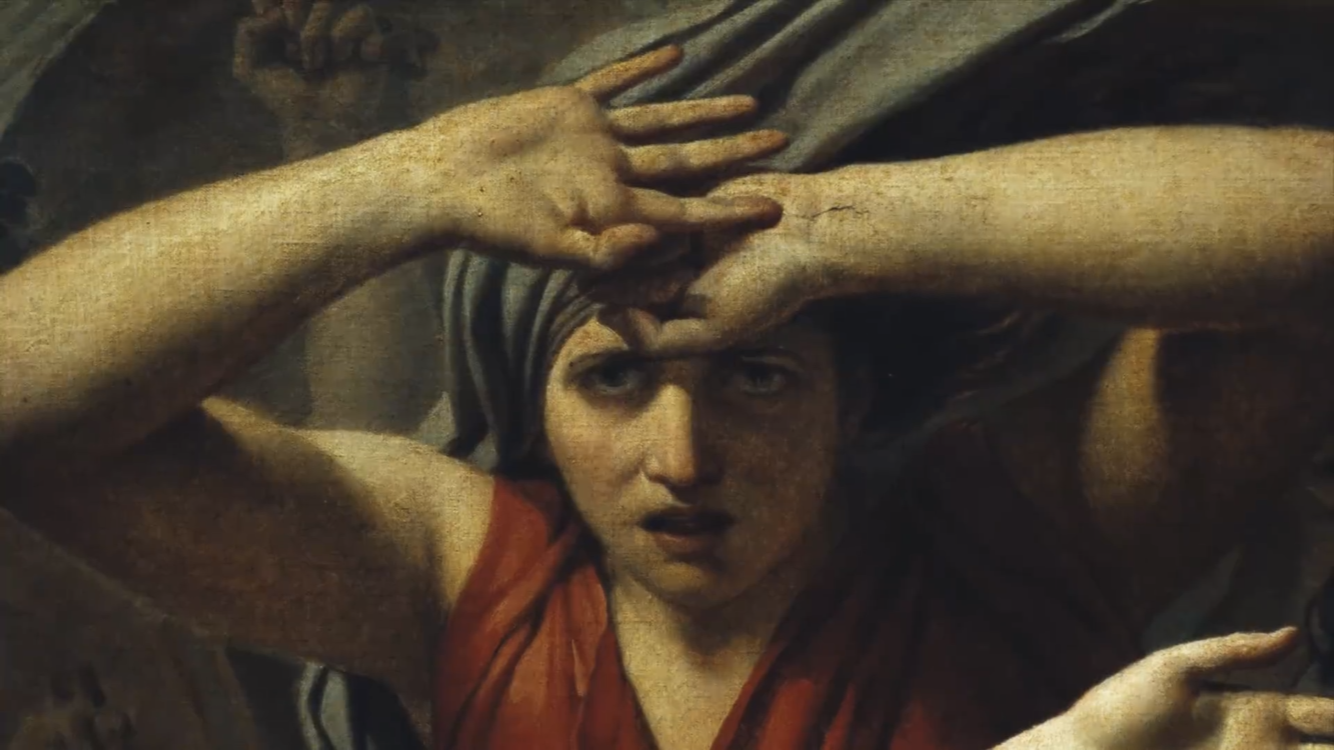
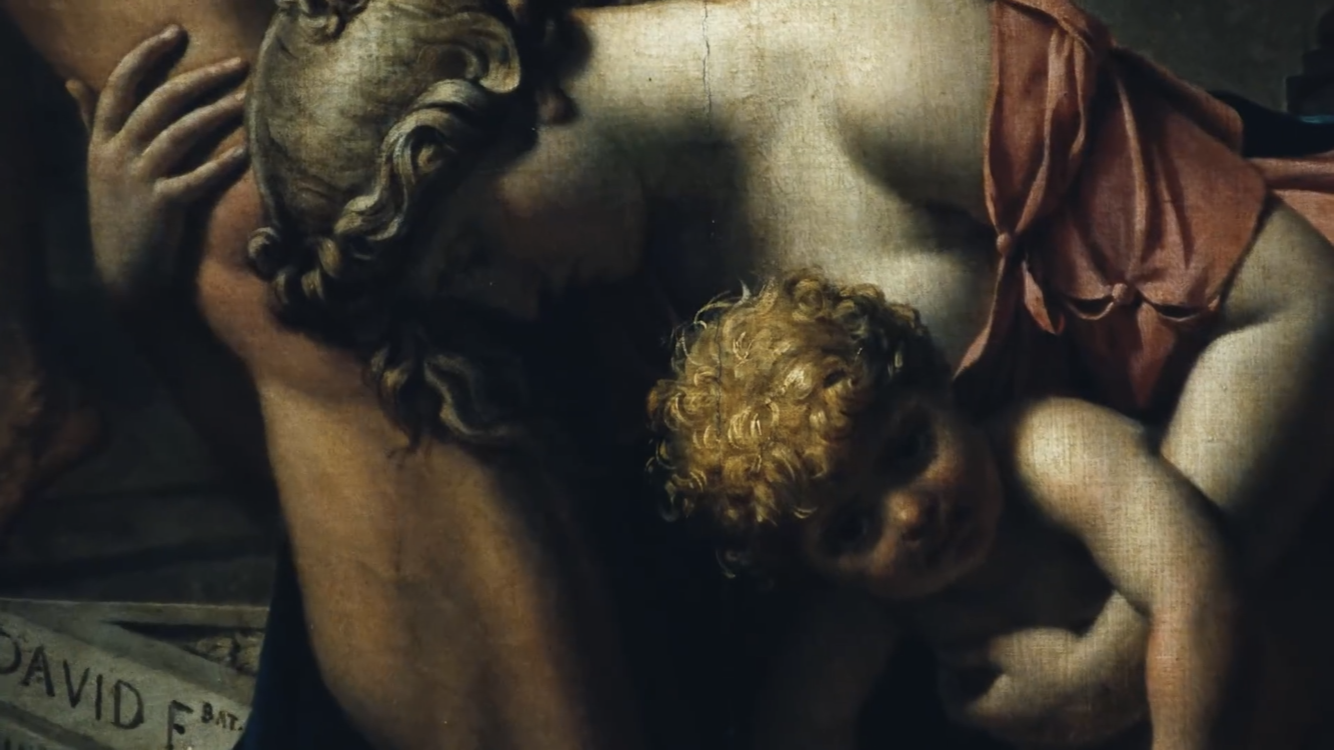
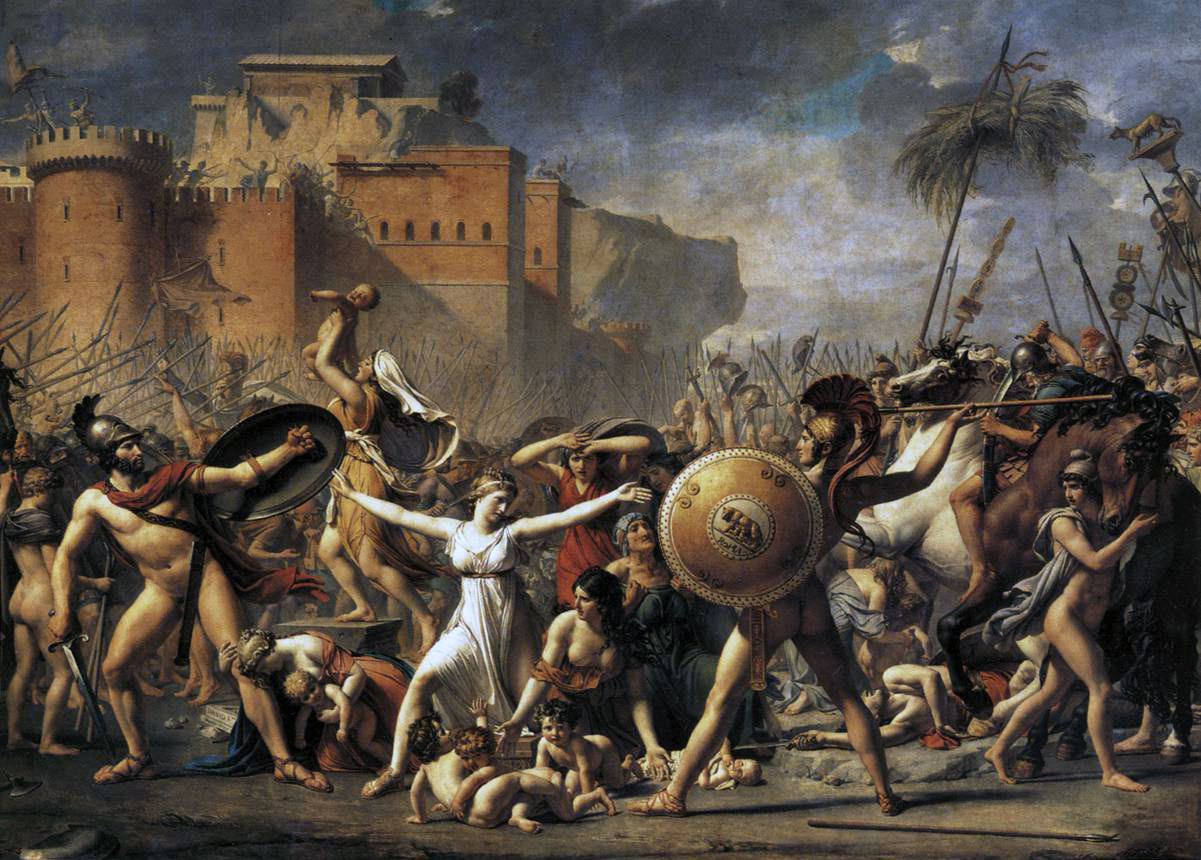
Intervention of the Sabine Women, Jacques-Louis David, 1799
The story of the Sabine women is a disturbing episode in Roman mythology in which Roman men just abduct a bunch of women from a neighboring region. Most artistic portrayals of this scene focused on the abduction of the women, but David wanted to do something different. To honor his wife, he wanted to twist the tale a bit by featuring a theme of love triumphing over conflict- a very prominent theme in the Carter’s new album. It’s also pretty refreshing to see a clothed, unarmed woman strike fear into the hearts of naked, vulnerable men with weapons.
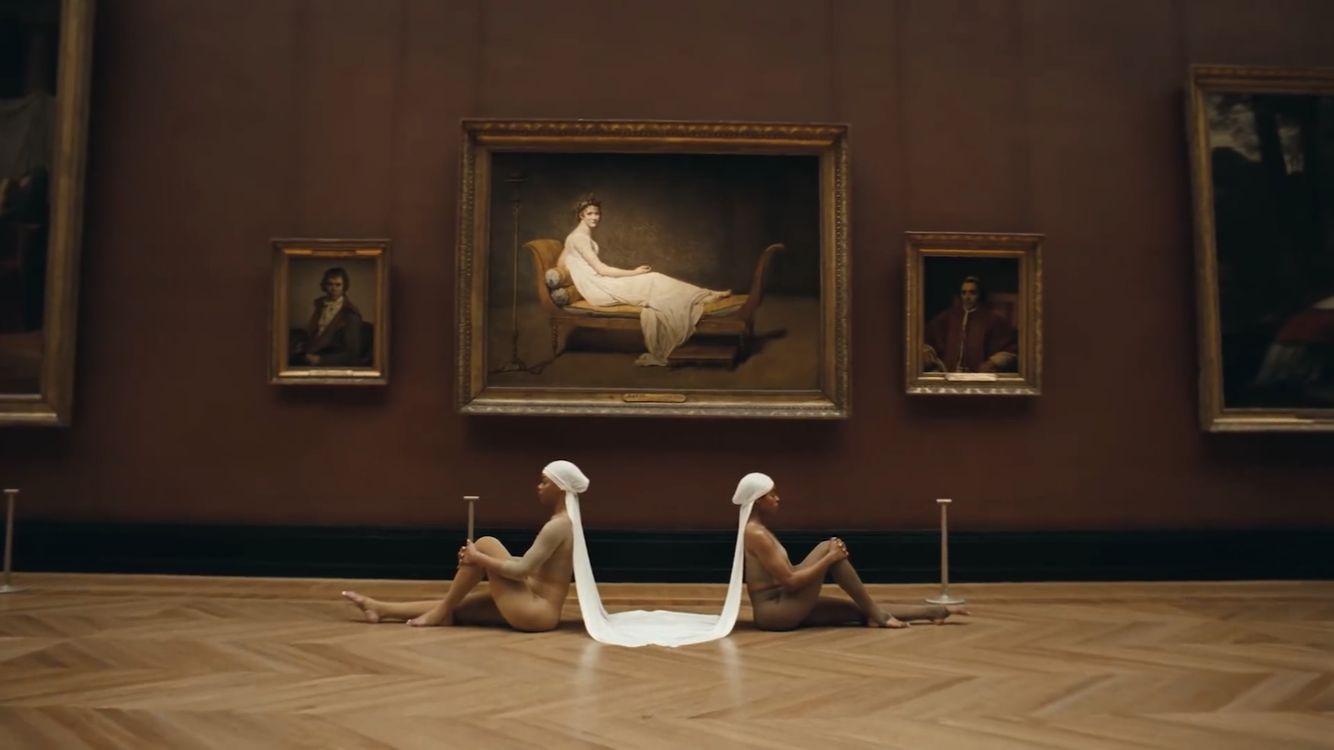
On the opposite side of the Coronation of Napoleon lies this painting.
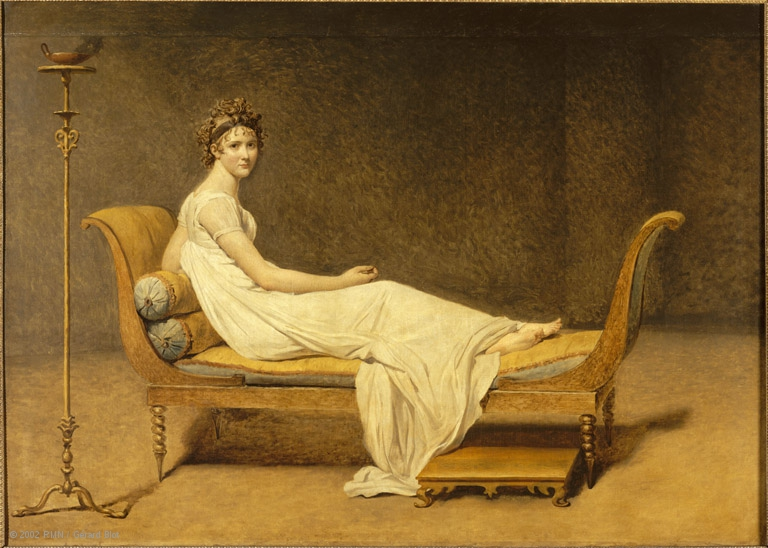
Portrait of Juliette Récamier, Jacques Louis-David 1800
Juliette Récamier was an adored socialite and the ideal French woman of the 19th century. She was beautiful, she had good taste in books, and she never had sex so she was purer than pure. The headdresses worn by the women sitting in front of the paint mimic Portrait of a Negress by Benoist, which we’ll talk more about later, but it’s definitely an awesome juxtaposition between the ideal white woman and two black women calling attention away from her.
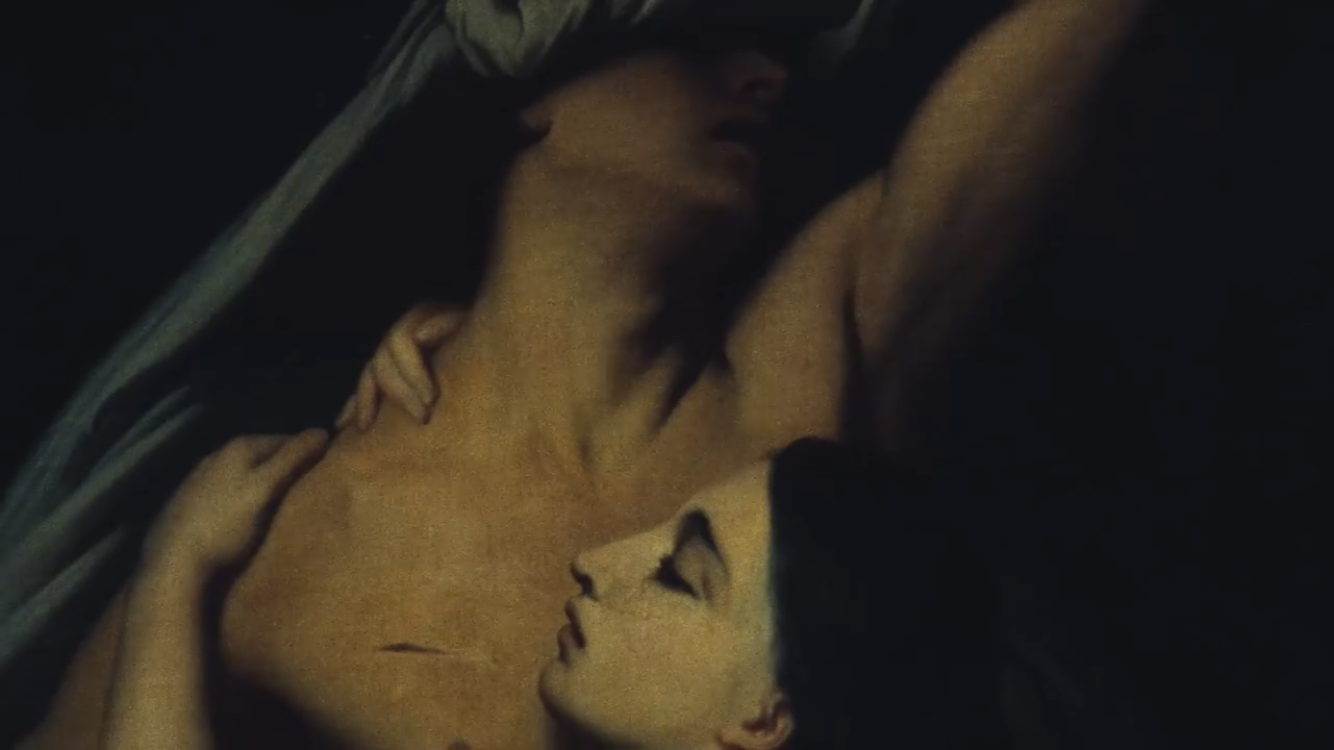
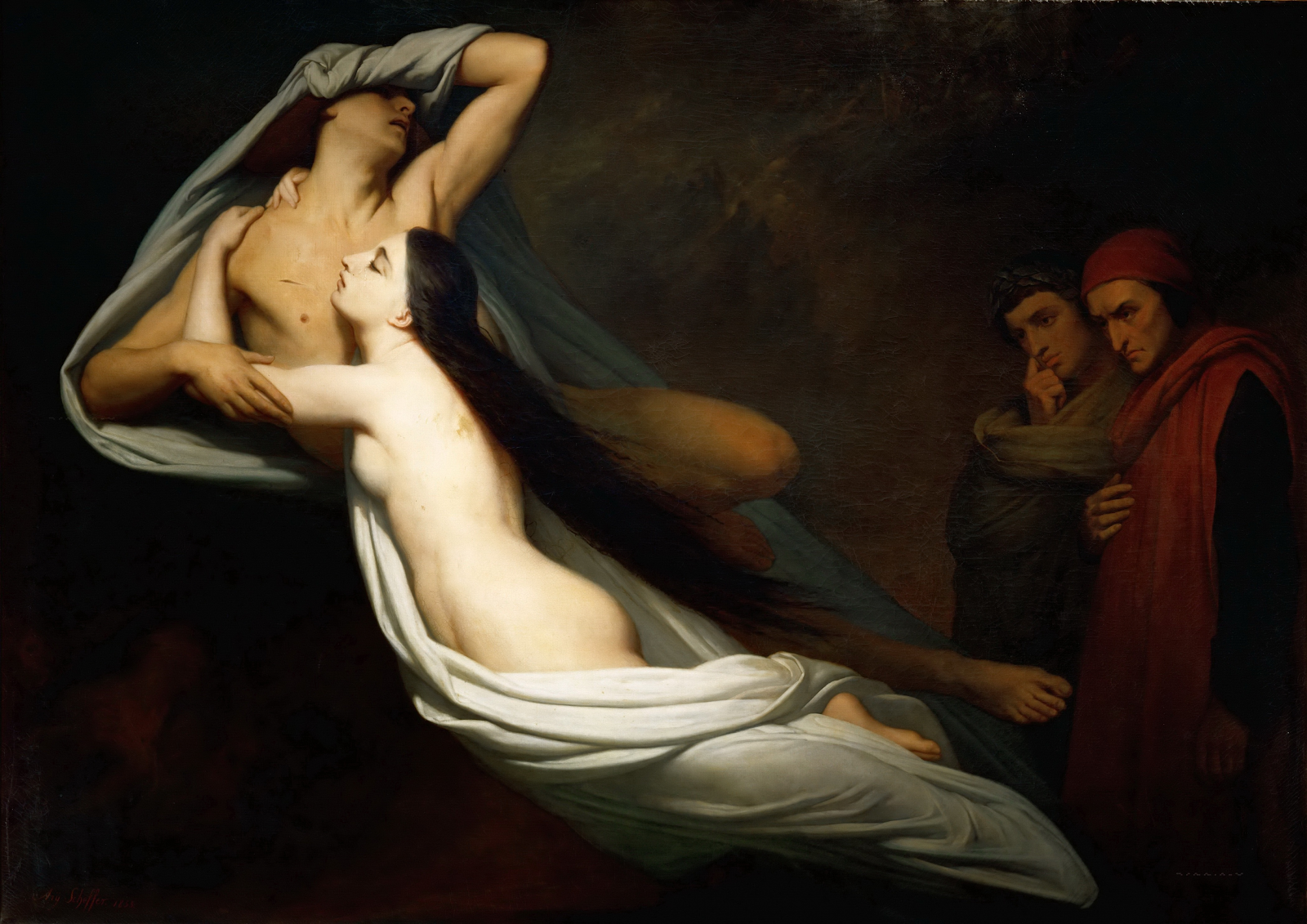
The Ghosts of Paolo and Francesca Appear to Dante and Virgil, Ary Scheffer, 1835
Finally, a painting that isn’t by David! Based off of Dante’s Inferno, this work depicts the scene in which Dante and Virgil appear in the second circle of hell, a space for those overcome by lust. There they meet lovers Paolo and Francesca who are forced to spend eternity in a whirlwind together. Why were they sent to the hell in the first place, you ask? Adultery. I’m sensing a recurring theme here…
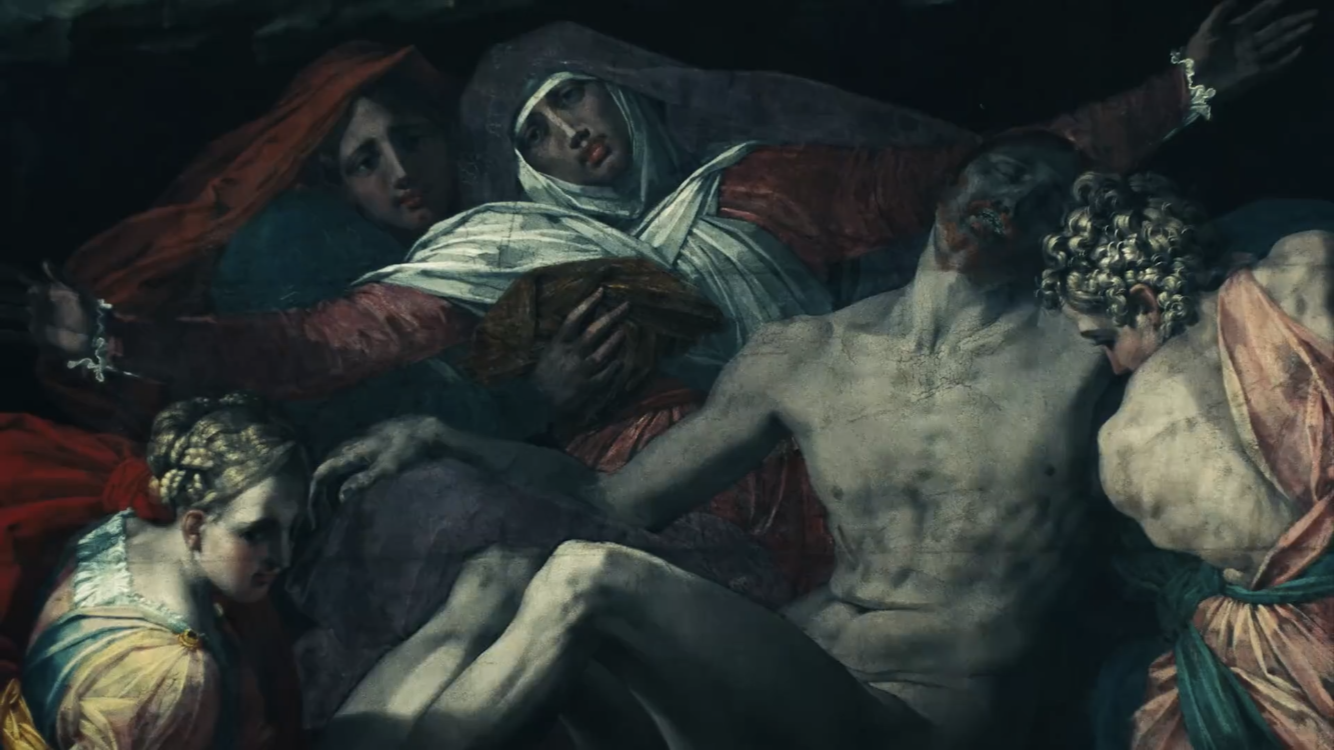
As we see the lovers Francesca and Paolo, we’re also shown this rather tragic painting of dead Jesus.
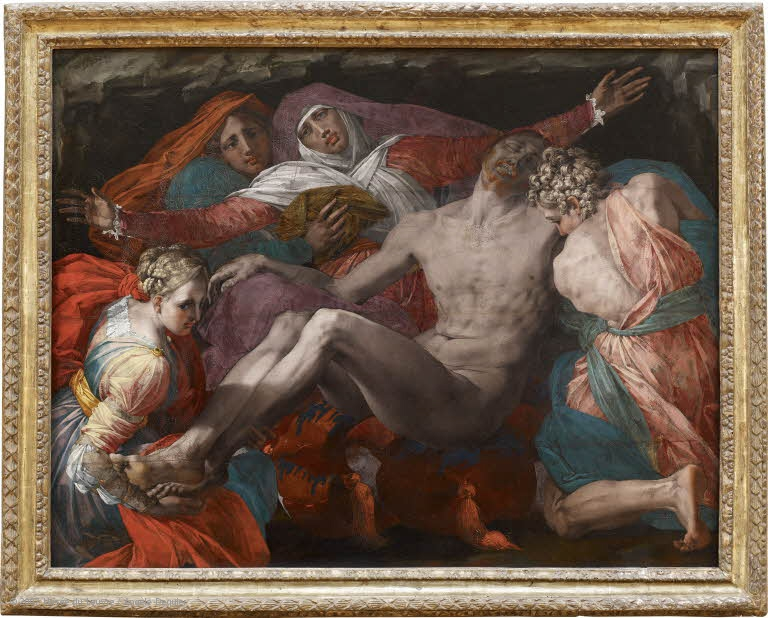
Pieta, Rosso Fiorentino, 1537-1640
Both Mary Magdalene and Jesus take up the same amount of space in the painting’s composition. By spreading her arms outward Mary symbolically relives the act of Jesus’ crucifixion and in turn his martyrdom. Maybe it’s a bit weird to see this image when we keep seeing black couples embracing each other at this part in the video, but it certainly adds a level of tragedy into their love.
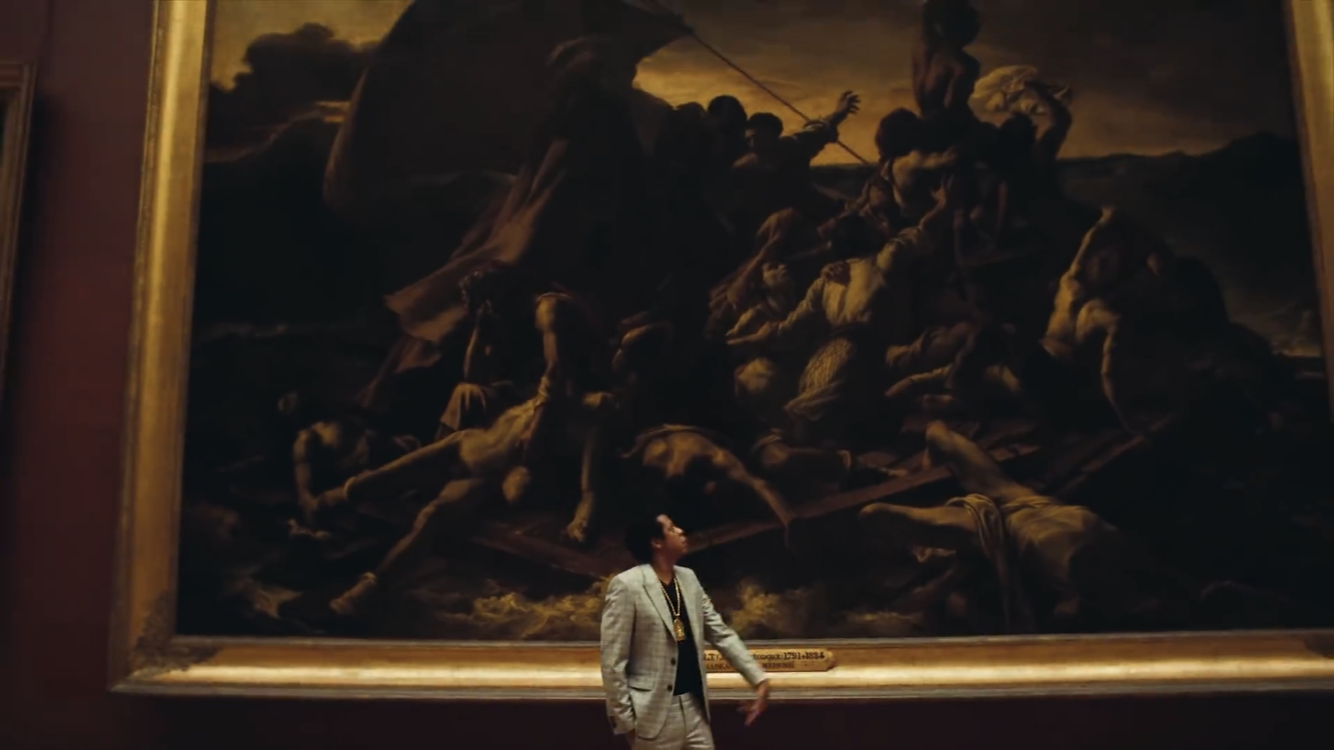
Time for Jay-Z’s verse!
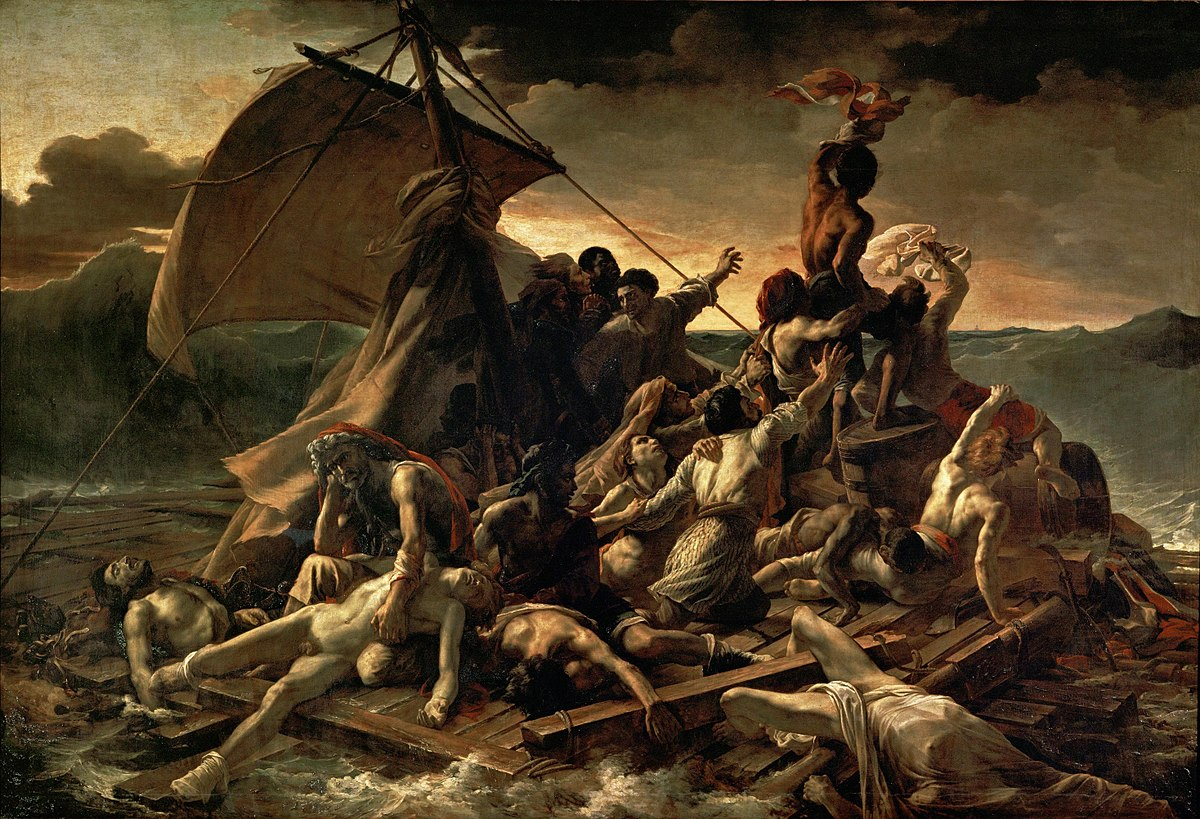
The Raft of the Medusa, Théodore Géricault, 1819
This work has a rather unsettling story attached to it; it depicts the survivors of a shipwreck who had to practice cannibalism to escape starvation and dehydration. So you can imagine how controversial the painting, especially considering that at the apex of the human pyramid is a black man. Raft of the Medusa is considered an abolitionist and modern work because of it essentially depicts the black man as a symbol of strength and hope among fearful white men. Beyoncé sings “I can’t believe we made it” as we see close-up shots of the black man in the painting, confirming that the lyric refers to the success of black people despite the fact that slavery, colonialism, and racism tried to render such success impossible.
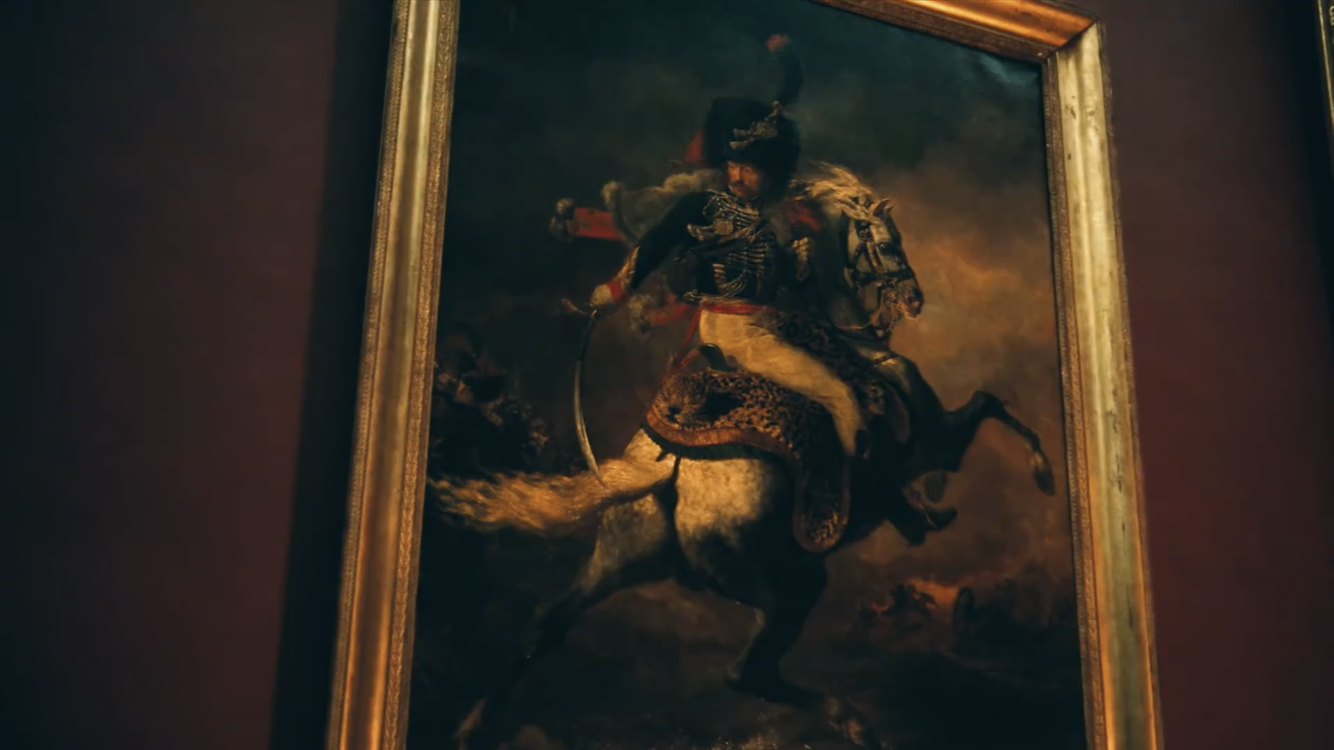
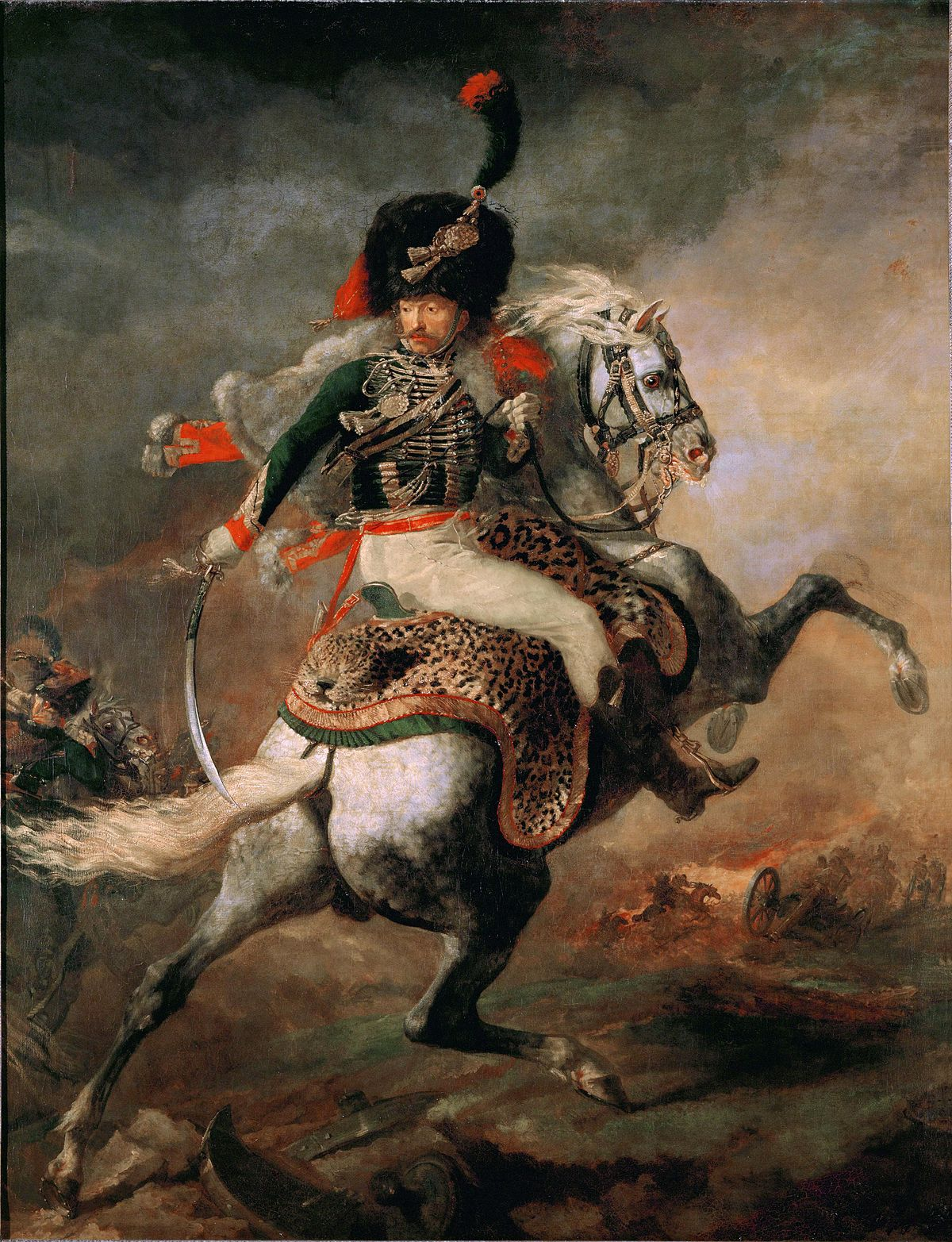
The Charging Chasseur, Théodore Géricault, 1812
I personally think this painting is more comical than historical- just look at how anxious both the soldier and the horse look! Do either of them know what they’re doing? Gericault was totally aware of Napoleon’s failing reign and decided to implement that into this painting. The fact the soldier is seated upon an exotic saddle made from the skin of a cheetah--and where do cheetahs come from? Africa, of course -- suggests that the failure of Napoleon’s empiric reign is due to the exploitation of his colonies. This painting perfectly exemplifies colonialism and its long-standing effects on society- built under the false guise of strength and superiority, it becomes clear at closer look that it is really based out of fear and desperation.
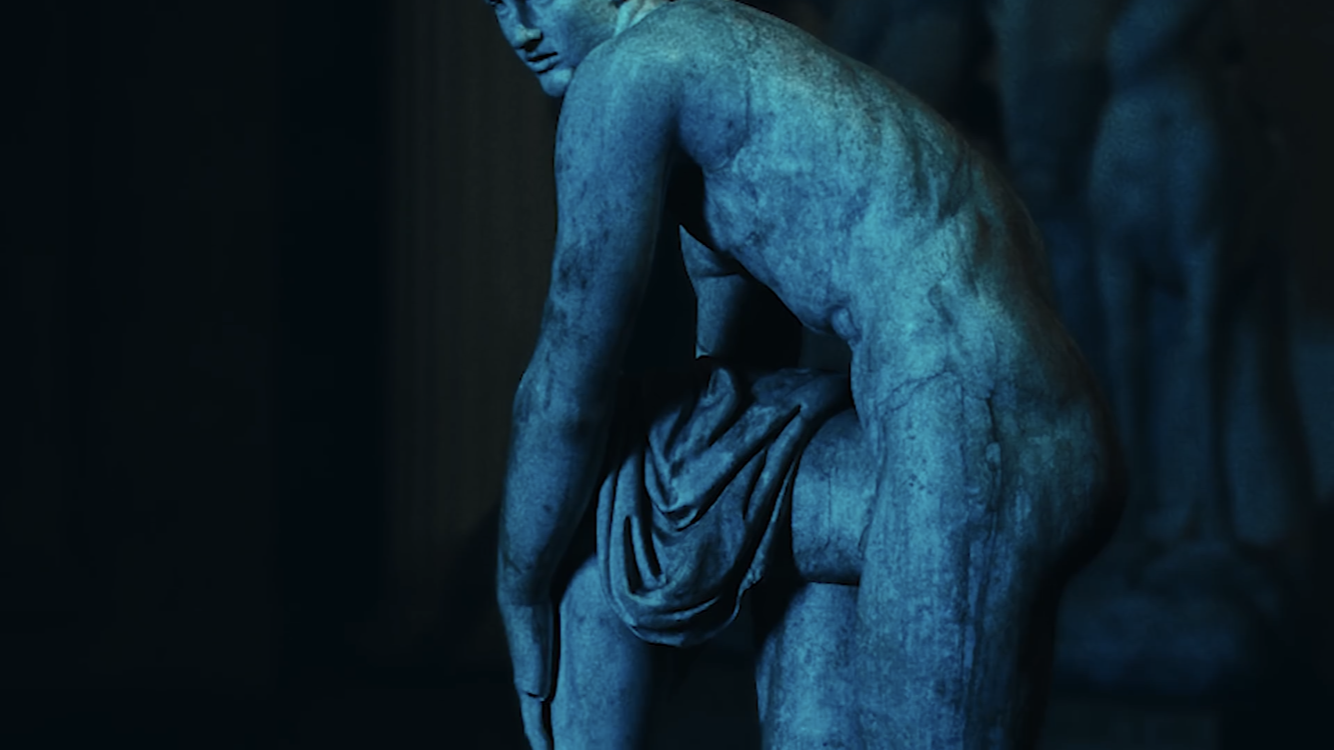
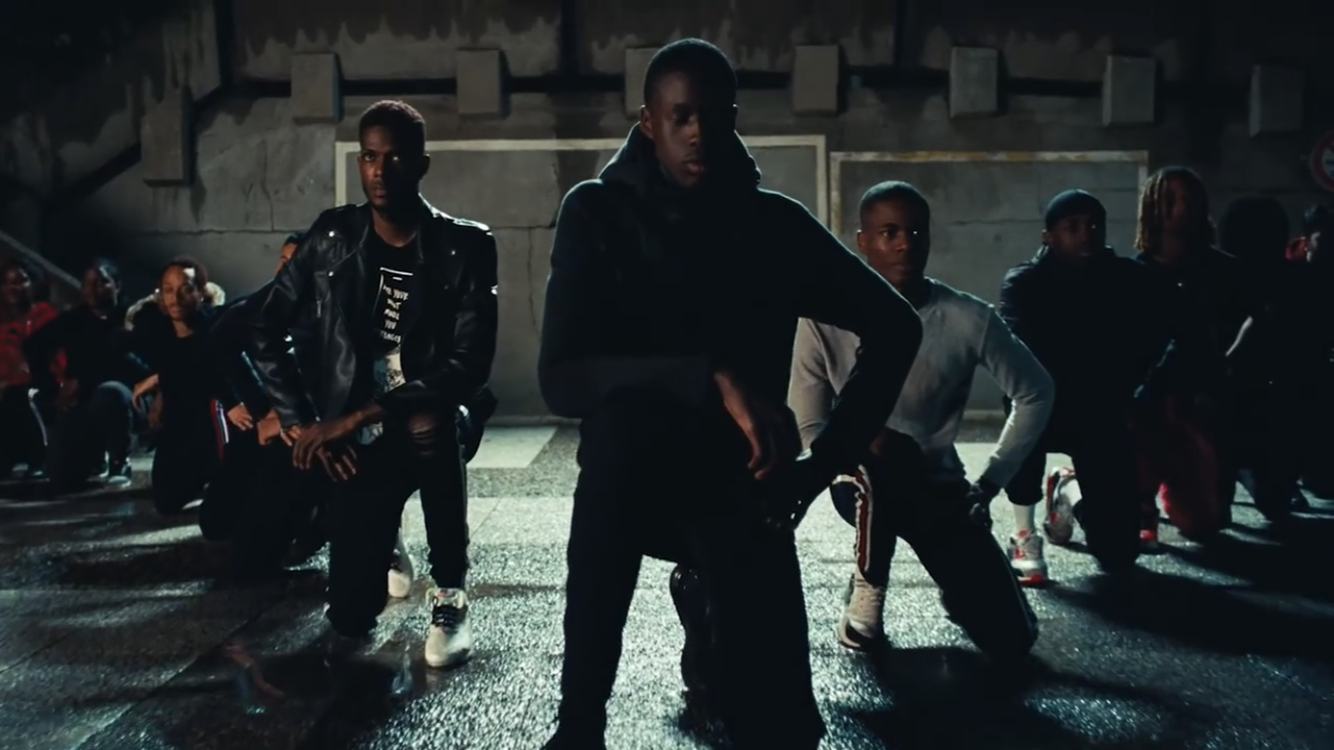
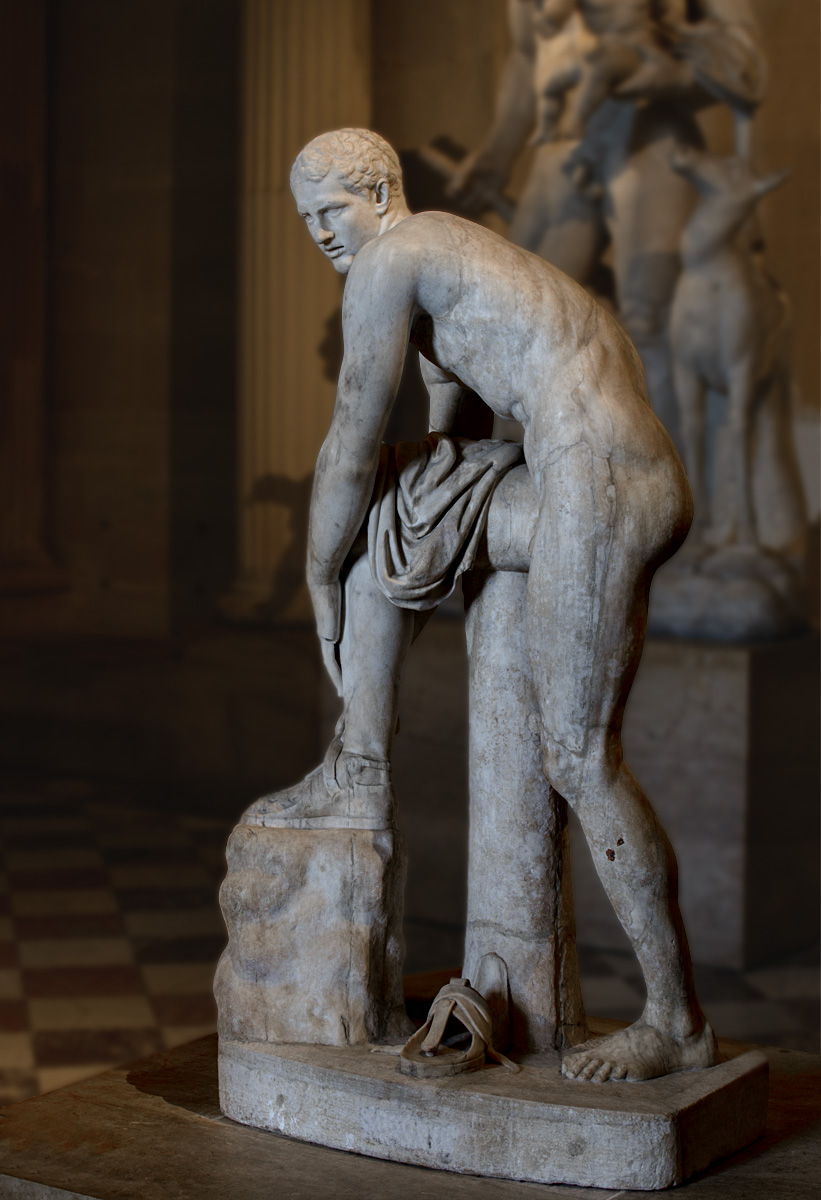
Hermes Fastening His Sandal, Lysippos
There’s actually no evidence supporting the claim that this figure is Hermes. His sandal isn’t winged, plus he’s not wearing his usual helmet. It’s entirely possible the figure could be the mythical figures of Theseus or Jason since both of their stories feature sandals. The important thing to note though is that the sandal doesn’t matter in the video- we don’t even see it. The video strips this statue of its former meaning by instead focusing on its kneeling position and paralleling its body to black men kneeling as a reference to the NFL banning players from kneeling as a form of protest during the national anthem. In other words, the video shows people of color appropriating the form of this classical Greek statue similarly to how white people often appropriate black culture, only this is done with honorable intent rather than selfishness.
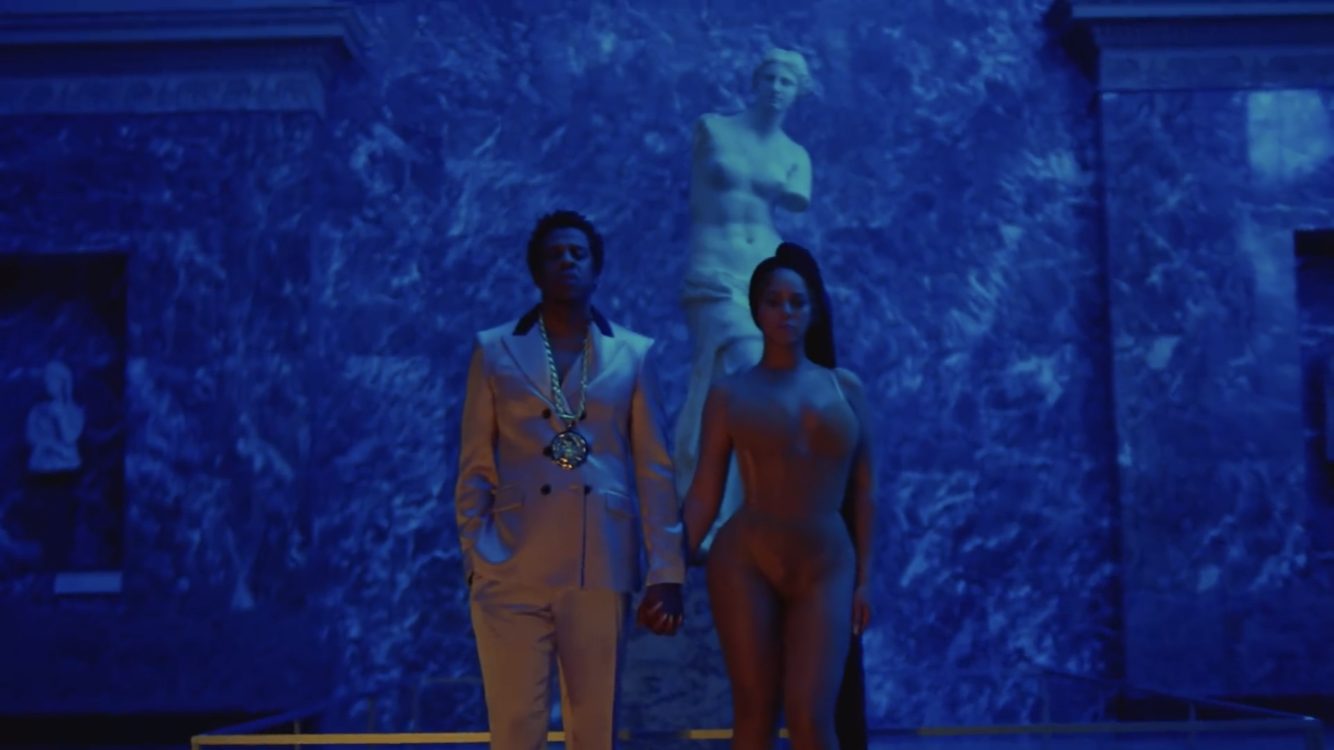
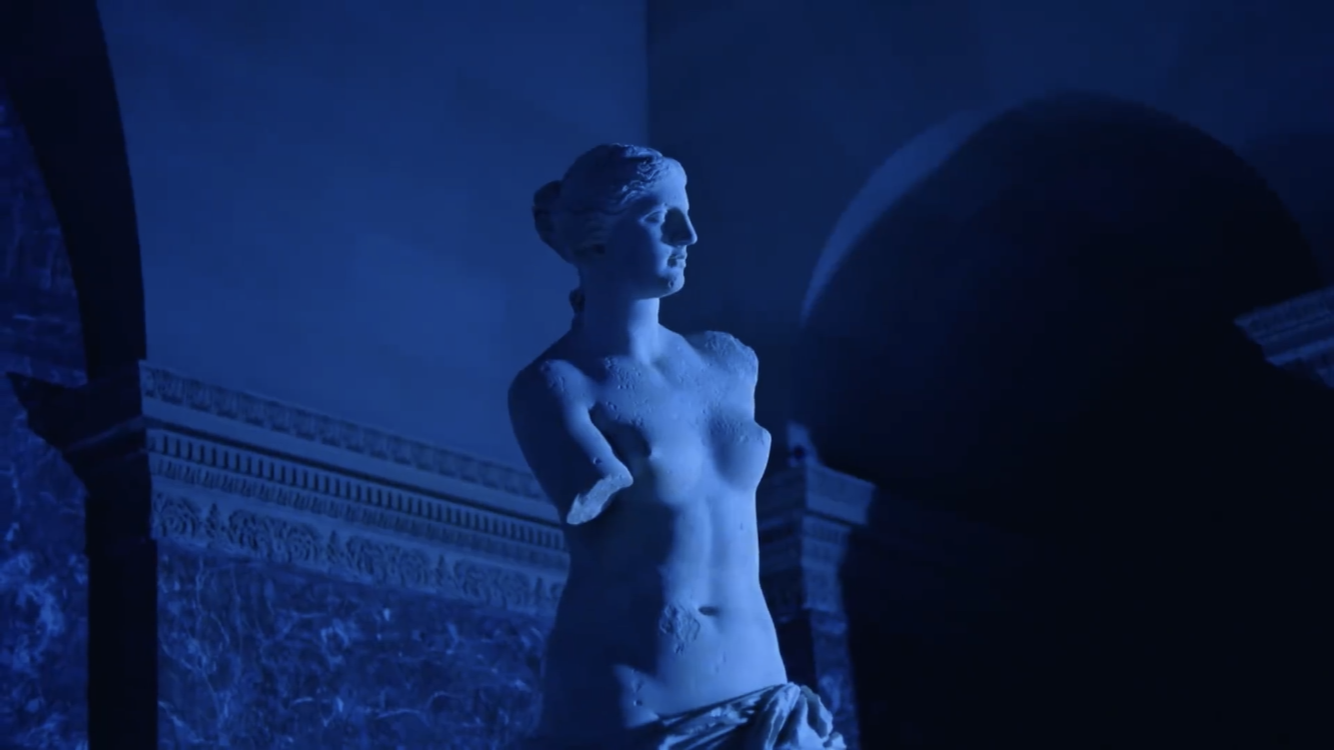
Venus de Milo, Alexandros of Antioch
Yet another unrealistic expectation for women. I’m kidding, but at the same time this incredibly famous statue of the Goddess of Love does in fact represent the idealized Western beauty. With her nude bodysuit and defiant stance Beyoncé becomes the new Venus, making the statue behind her look a little fearful. Dancing primarily with her arms, Beyoncé takes the focus away from Venus and shamelessly declares that she is the artwork to admire.
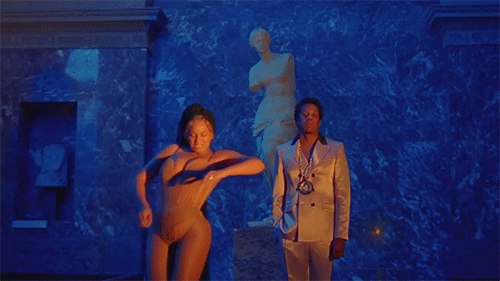
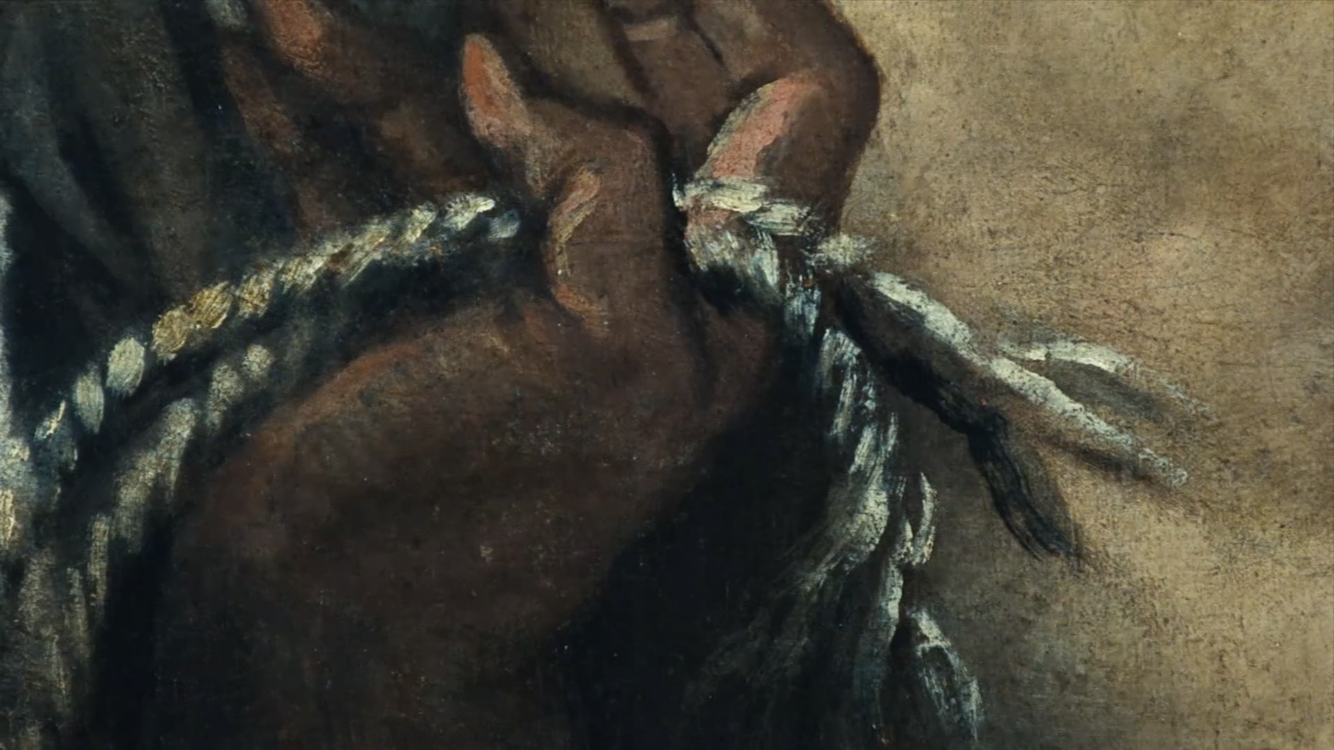
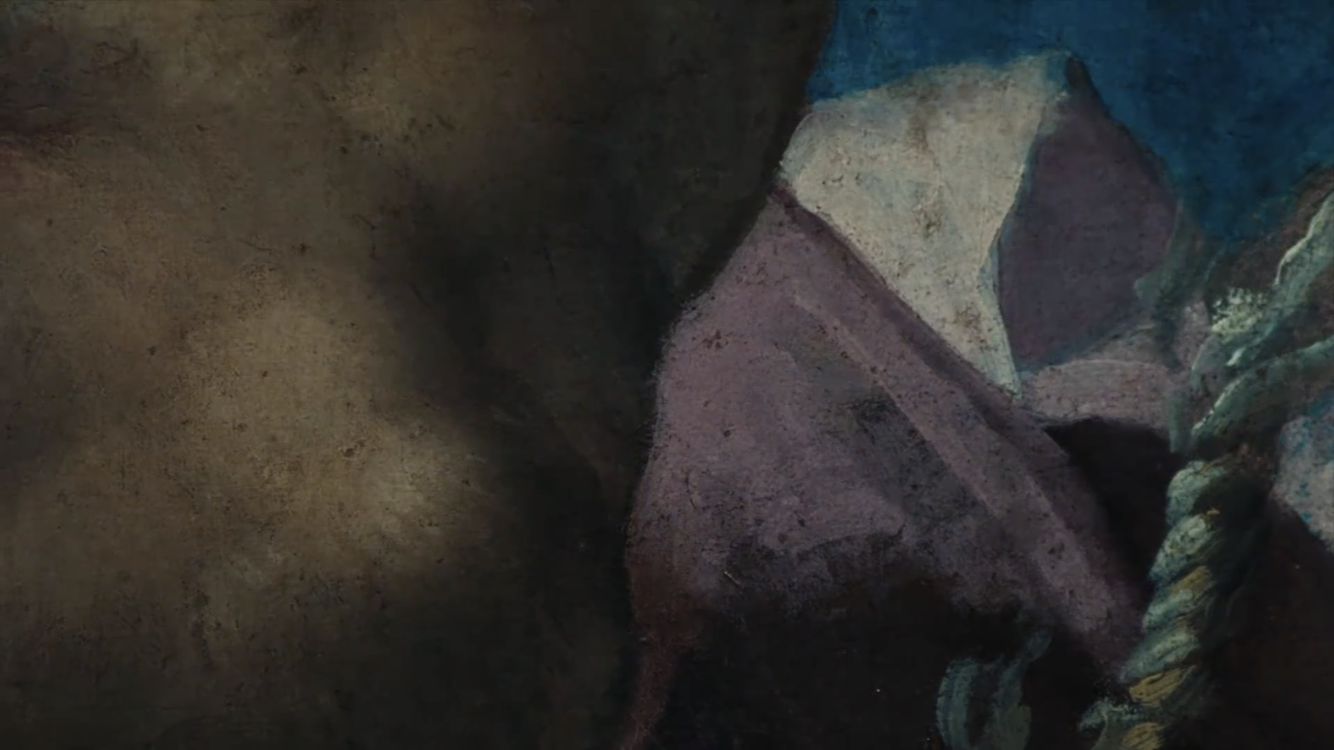
Details of Jupiter Hurling Thunderbolts at the Vices
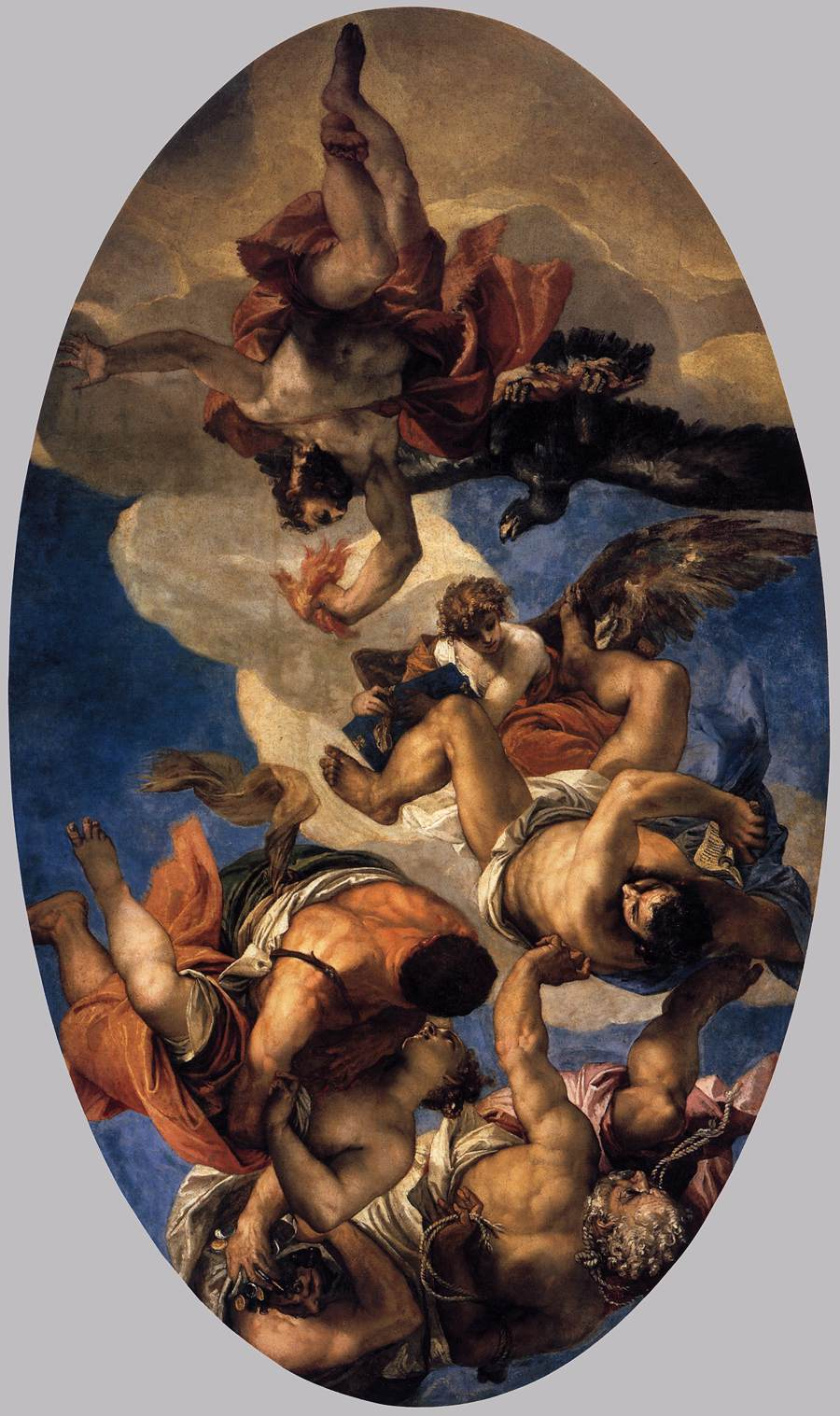
Jupiter Hurling Thunderbolts at the Vices, Paolo Veronese, 1554-1556
Remember this painting? It’s in the same gallery as the Mona Lisa from the beginning of the video! The focus on rope imagery is definitely a reference to slavery. In between these close-ups are shots of an interpretive dancer, at first with her wrists clasped together, then breaking out of this hold and dancing freely. The painting itself is simply a portrayal of the mythological deity Jupiter (Zeus) destroying the Vices- flaws, sins, immorality, etc.- in the context of the video it seems like Beyoncé and Jay-Z are hurling thunderbolts at racist restrictions placed on black people as the attempt to dismantle the exclusivity of a white-centric space like the Louvre.
We also get several of these close shots of Veronese’s Wedding Feast at Cana.
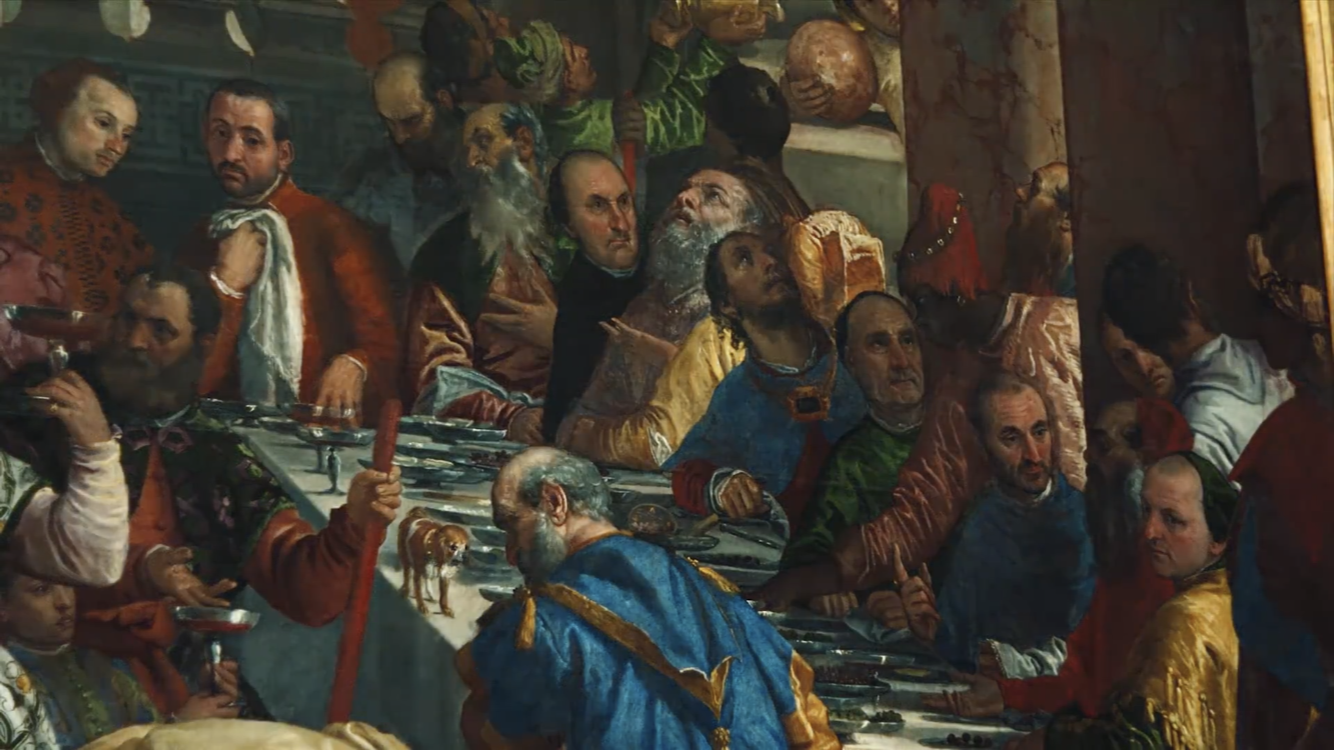
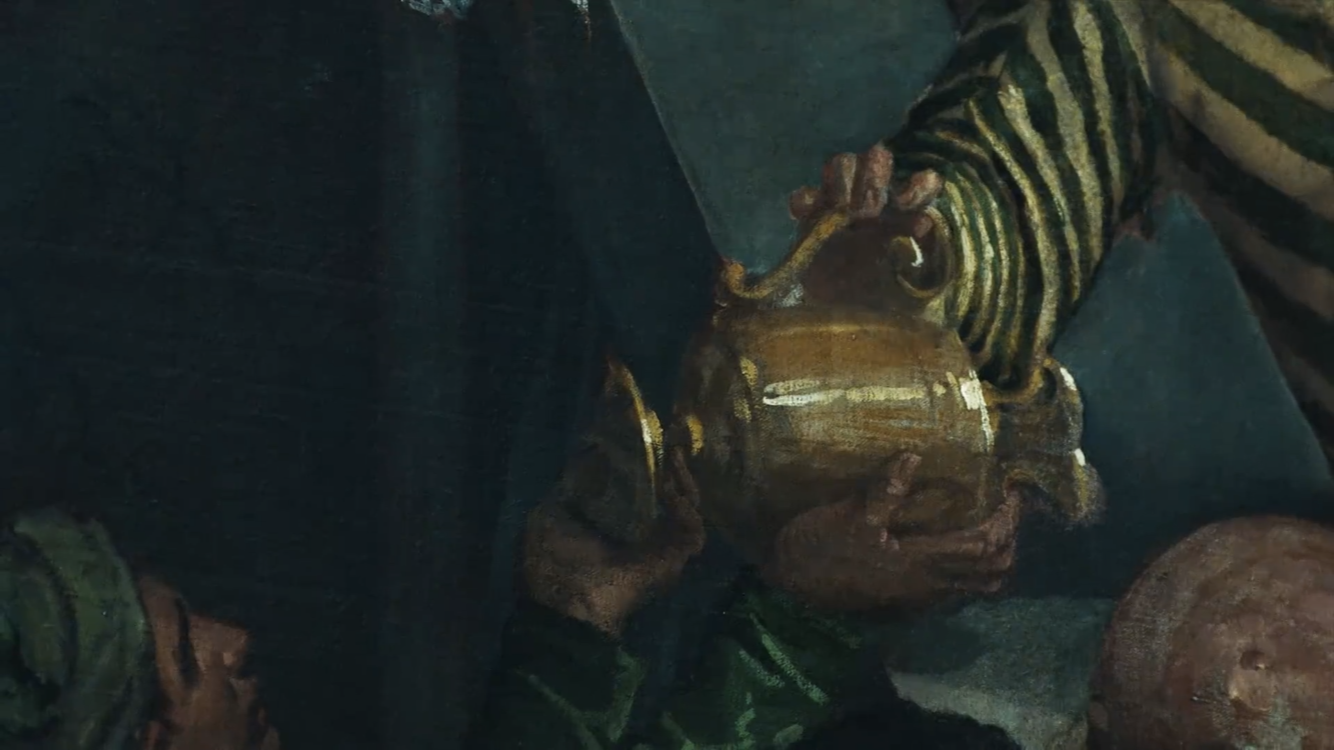
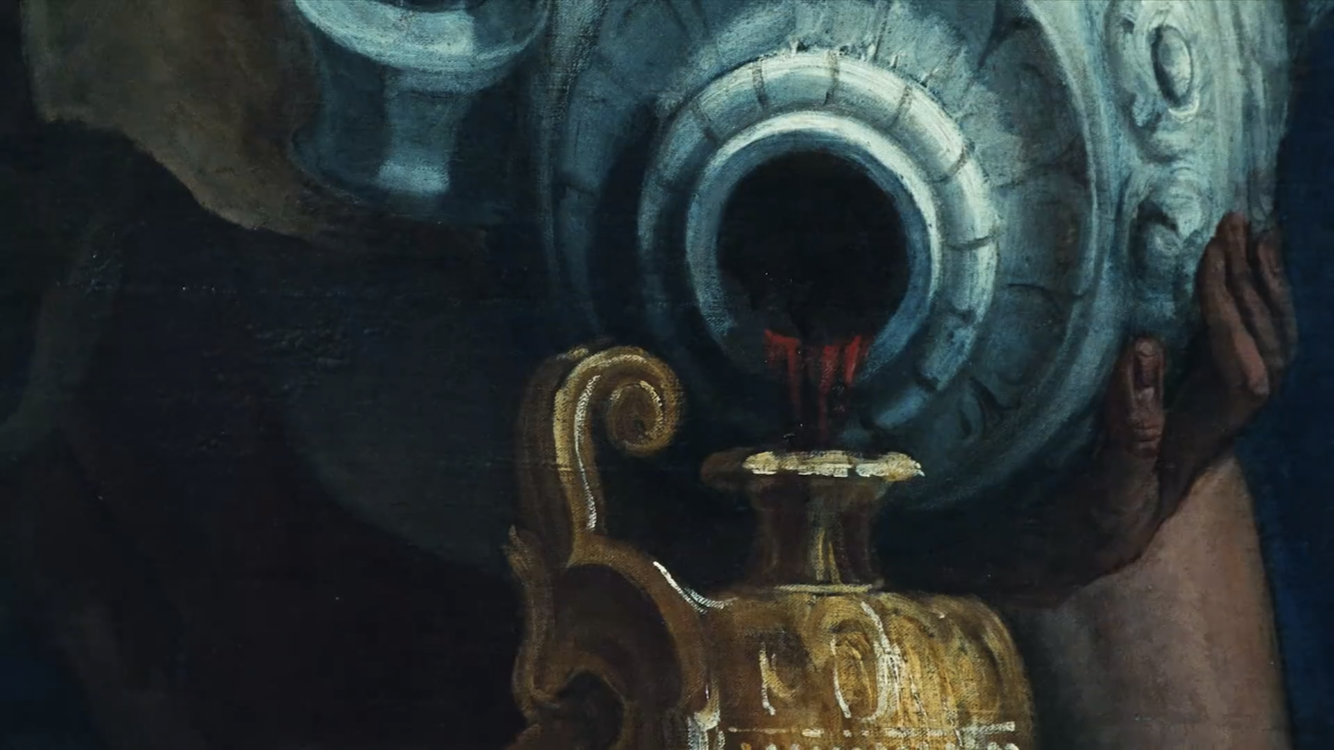
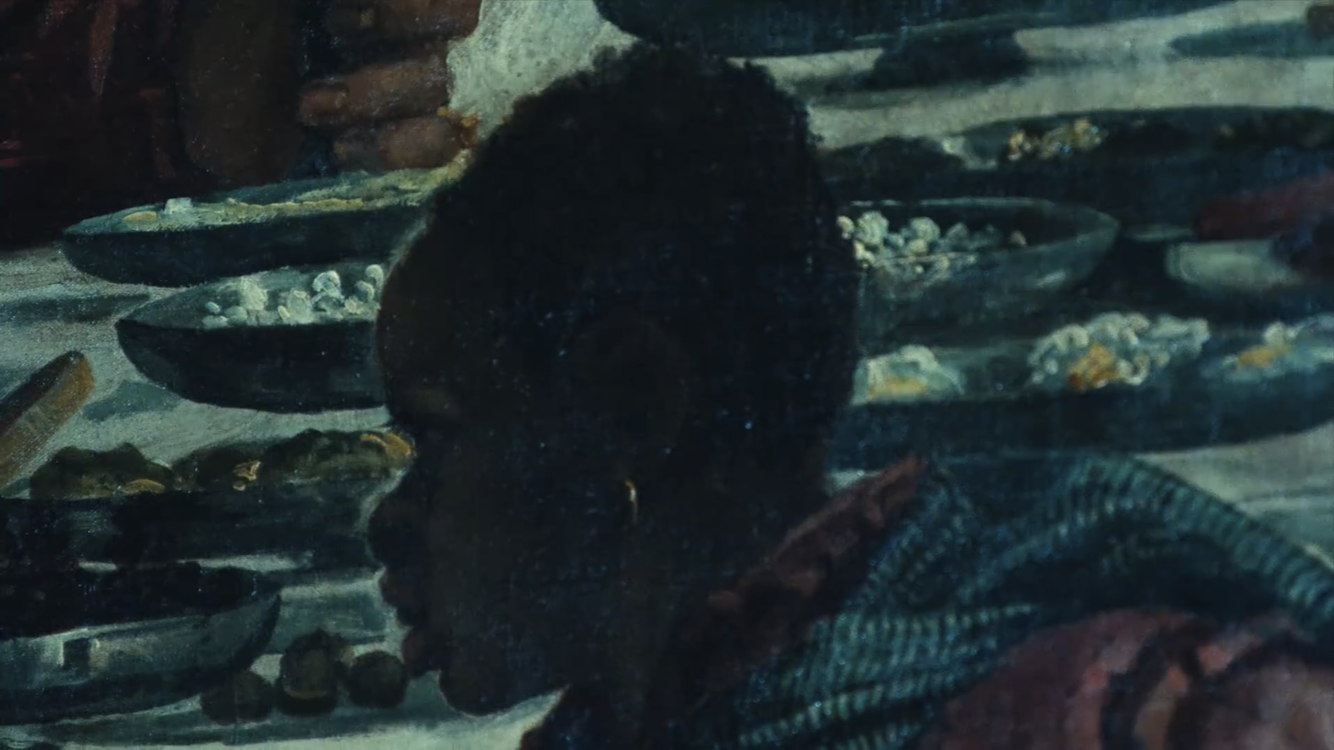
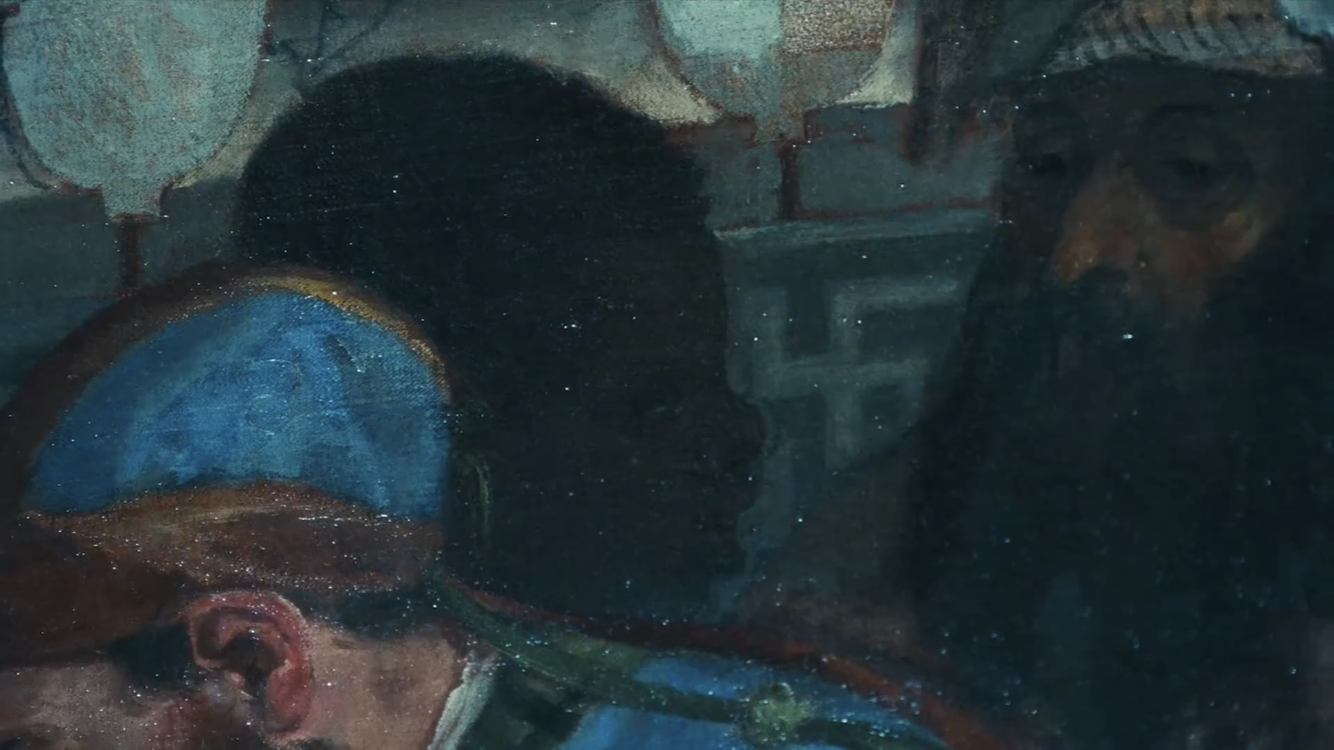
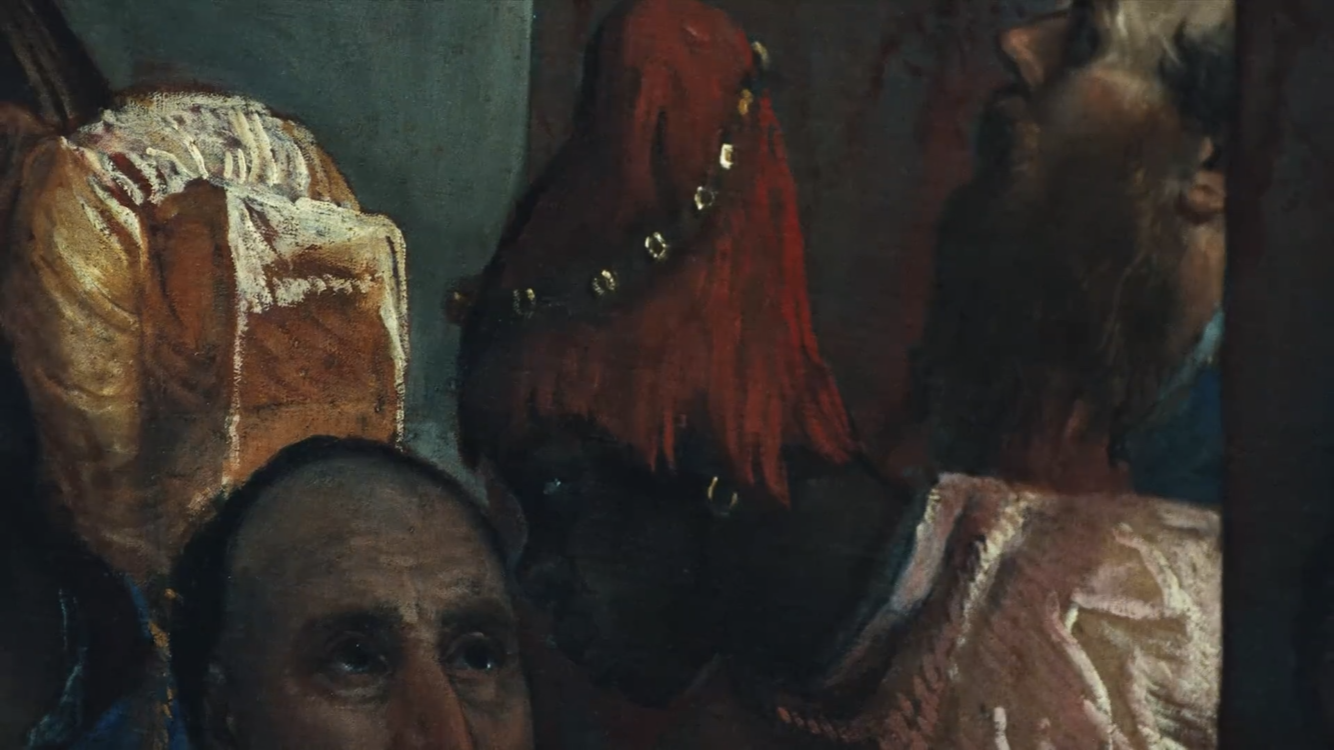
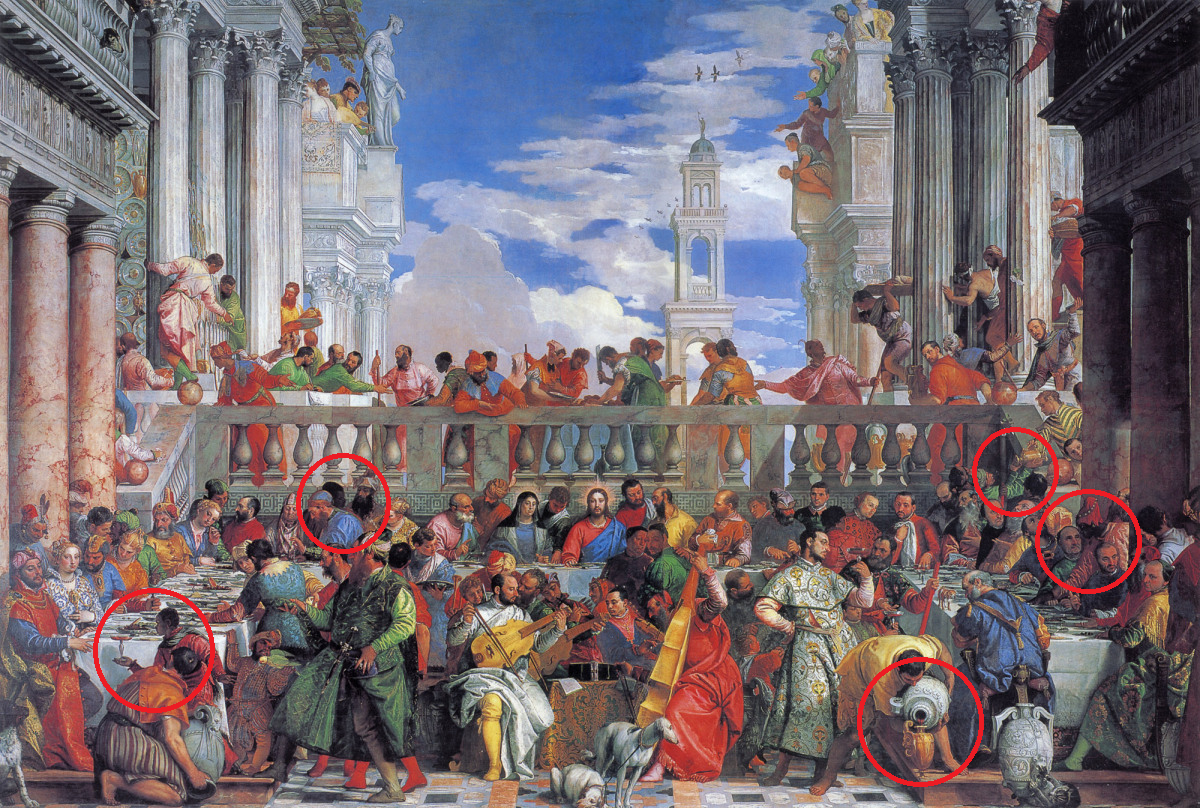
Wedding Feast at Cana, Paolo Veronese, 1563
This painting is the largest at the Louvre and it depicts black people as hardly-noticeable slaves in the background. The video’s closeup shots of these figures points out the erasure of black figures from art history despite them being very present in actual history. By reframing the painting to focus solely on its black characters, Beyoncé and Jay-Z defy Western art expectations as well as just plain ol’ American expectations.
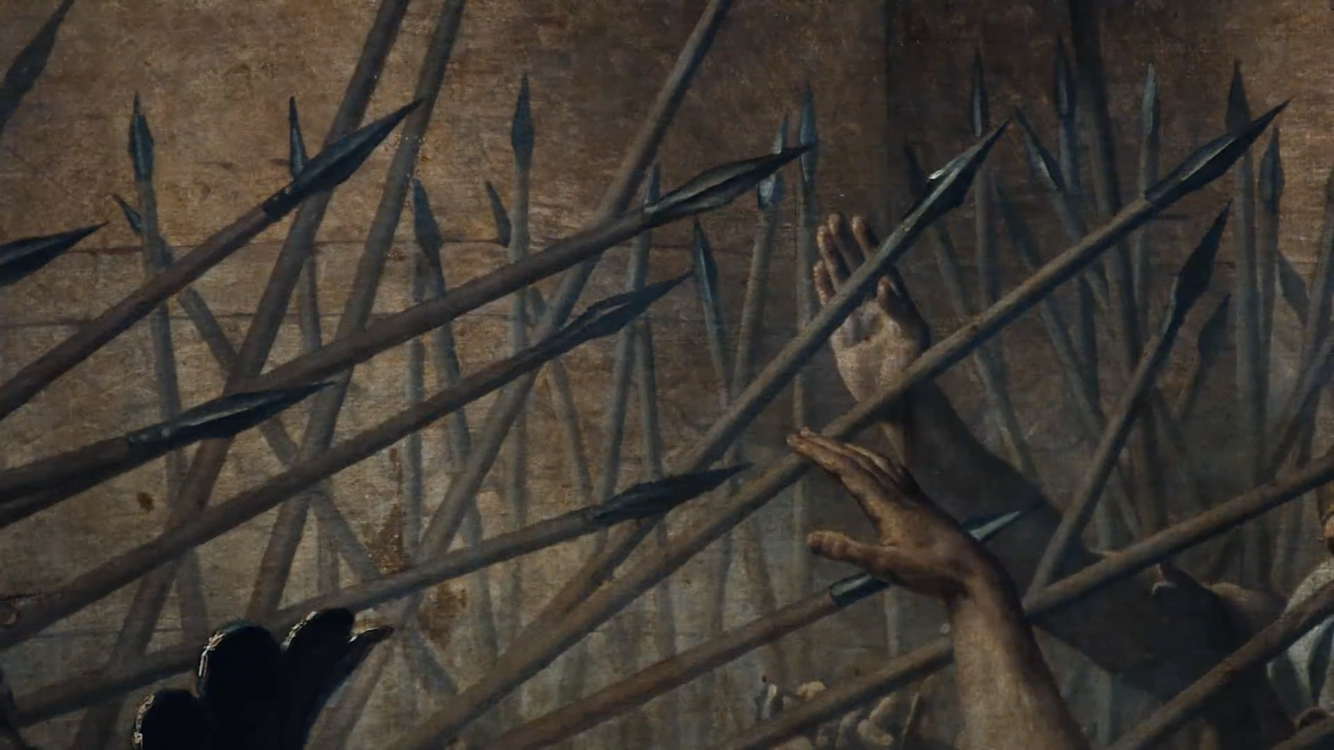
Detail of The Intervention of the Sabine Women by Jacques-Louis David
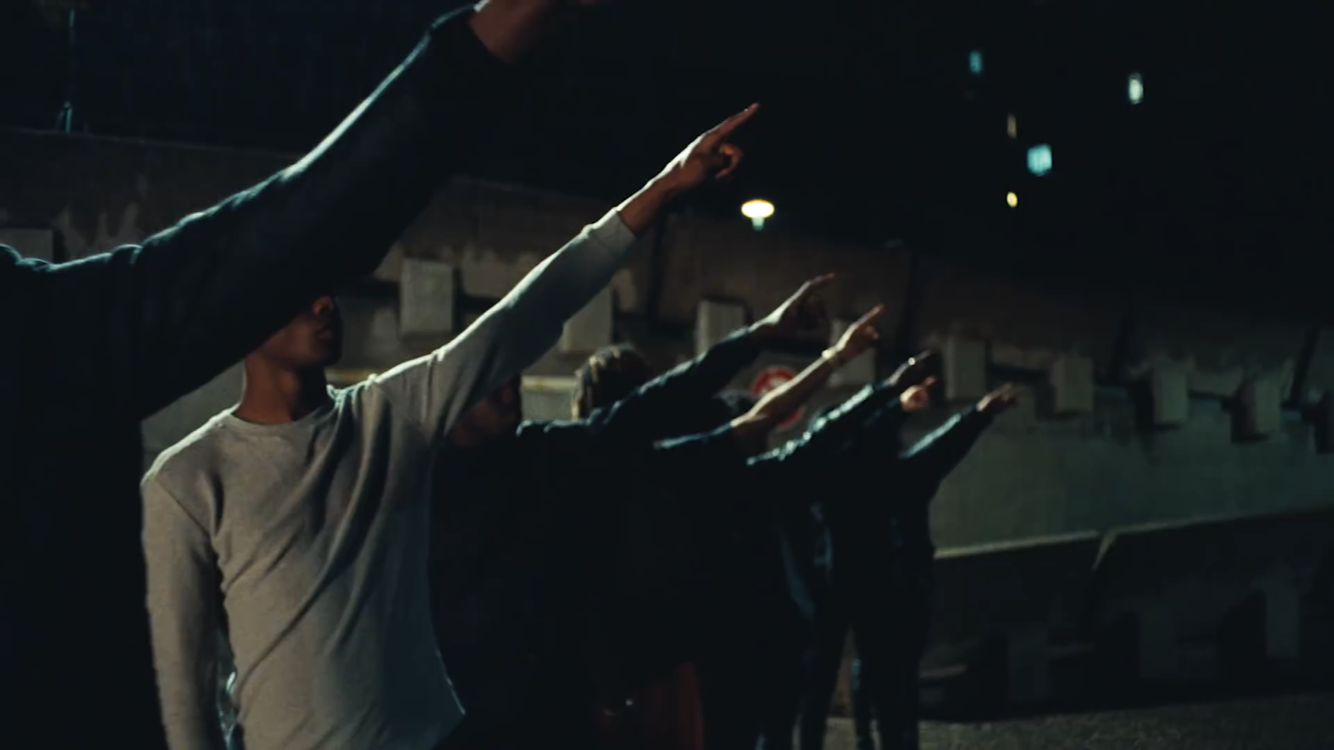
Unarmed black men being compared to the weapon imagery suggests that this is how the public generally sees black people as prone to violence, even when they are simply standing still. Even when they have their sights upward, both literally and metaphorically, they are still seen as a threat by society.
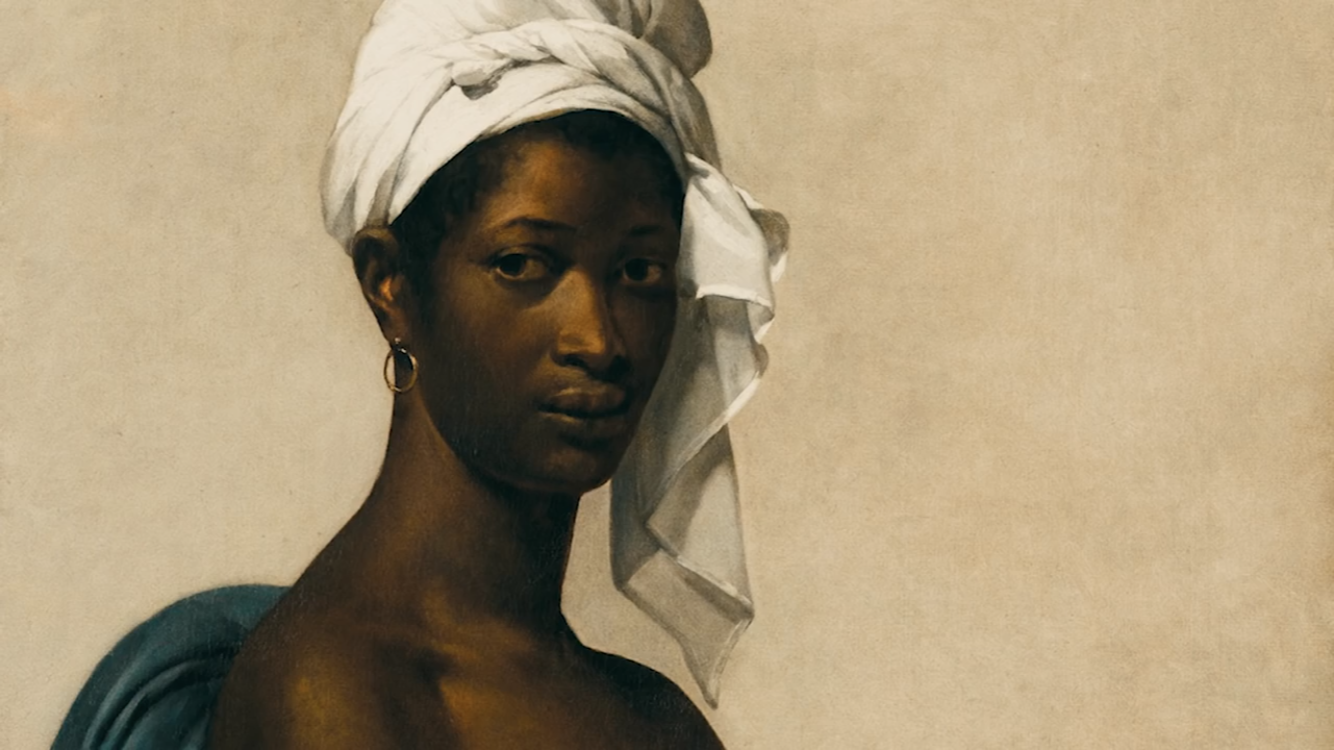
The video ends with a final screenshot of this painting.
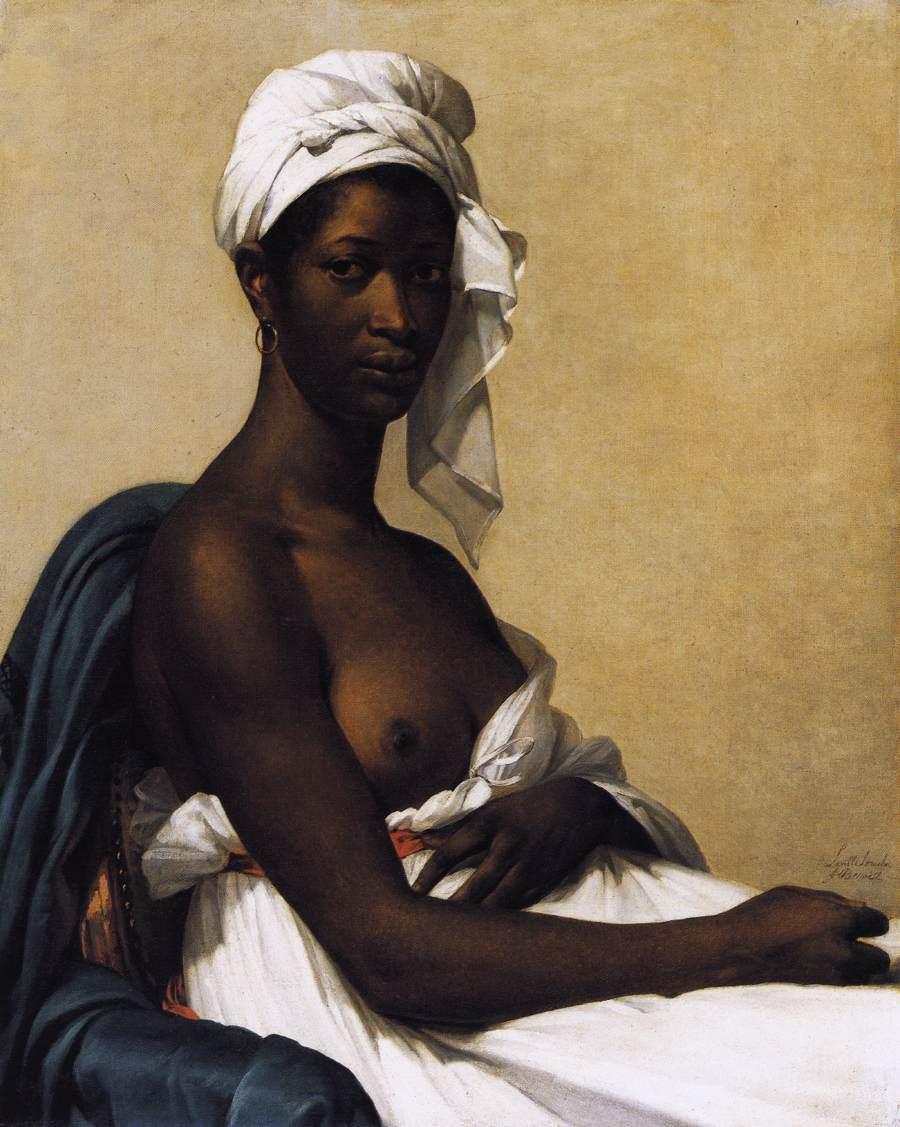
Portrait of a Negress, Marie Guillemine-Benoist, 1800
Benoist trained under artists like Elisabeth Vigee Le Brun and Jacques-Louis David. Six years after the abolition of slavery in France she painted Portrait of a Negress, which quickly became a symbol for both civil rights as well as women’s emancipation. While the video has shown us black people in paintings already, this is the first in which a black figure looks at the viewer directly. The painting recalls the Mona Lisa with the knowing stare and her arm set across her lap. As a painting featuring a black person staring back at the viewer with unwavering strength, this is the perfect artwork to end this video with. Beyoncé and Jay-Z channel the same energy in their own final glance at the camera.
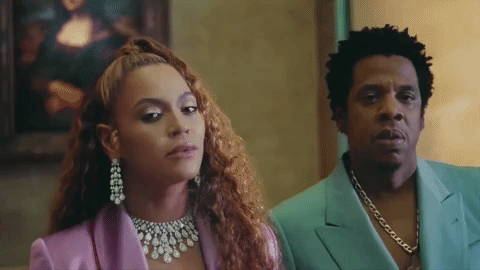
In APES**T Beyoncé and Jay-Z have reclaimed the white-centric space of the Louvre as a space for black people. They directly address the erasure of black figures from Western art, despite the fact black people have been incredibly present and influential in western history, and parallel classical Western artworks to black bodies and the continuing struggle to be a black person in a conservative America. Bey and Jay show that their wealth and success as musical artists has gained them influence to essentially disregard the reserved white exclusivity of “fine art” and bring black music and black bodies to the attention of viewers even when placed in front of the world’s most famous artworks.
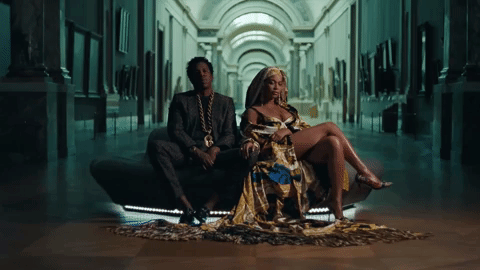
Why is this so radical? Because Western society has often placed more value on material objects than on people of color. If you’re confused as to why Beyoncé and Jay-Z felt the need to draw attention away from these artworks and back on themselves while existing in the same space, what you’re really doing is questioning whether the life of a human being is worth as much as some paintings. Culturally important and relevant paintings, yes- but aren’t black people important and relevant too? It’s time the art world, along with the rest of the world, get on board with that.
